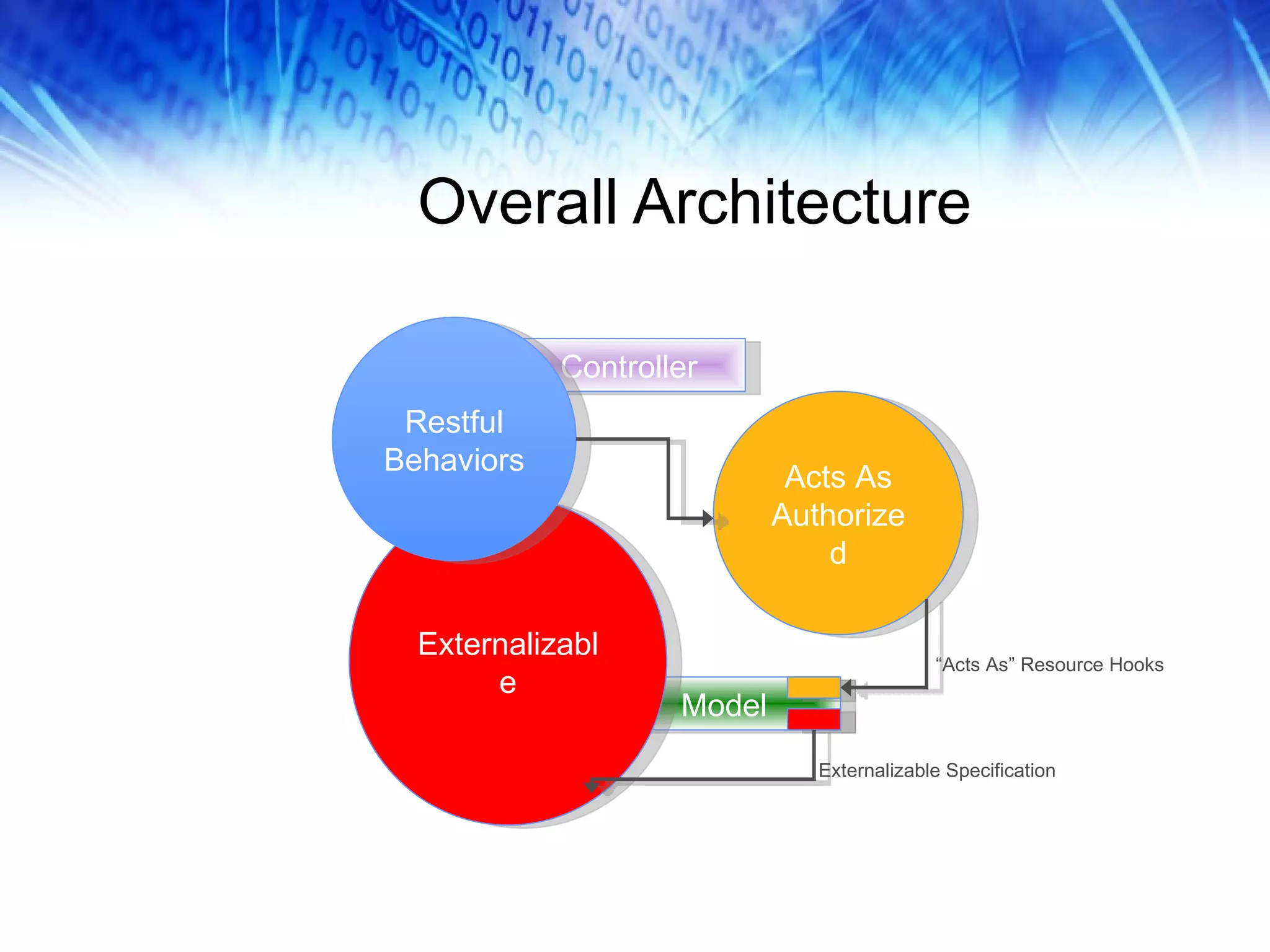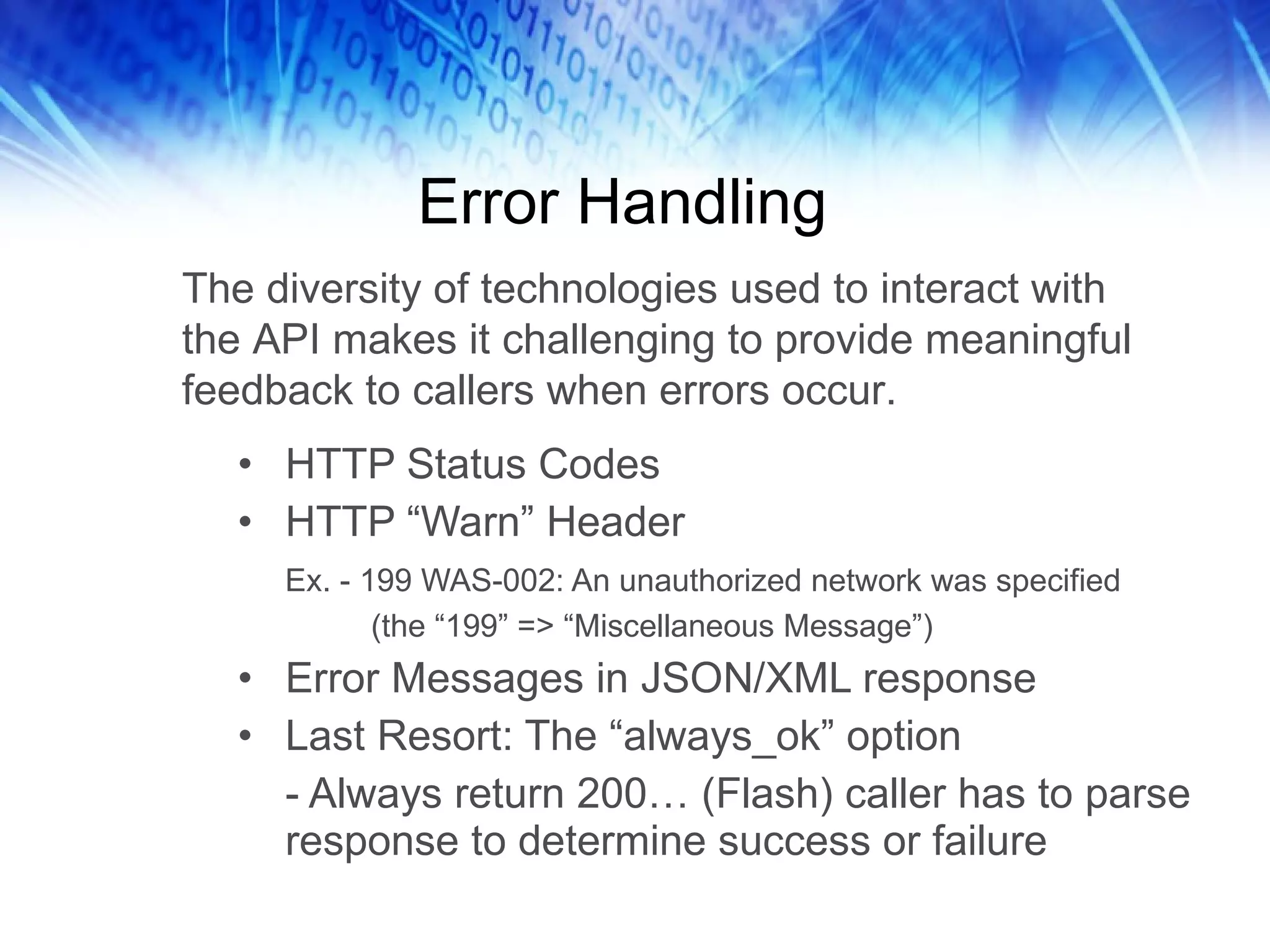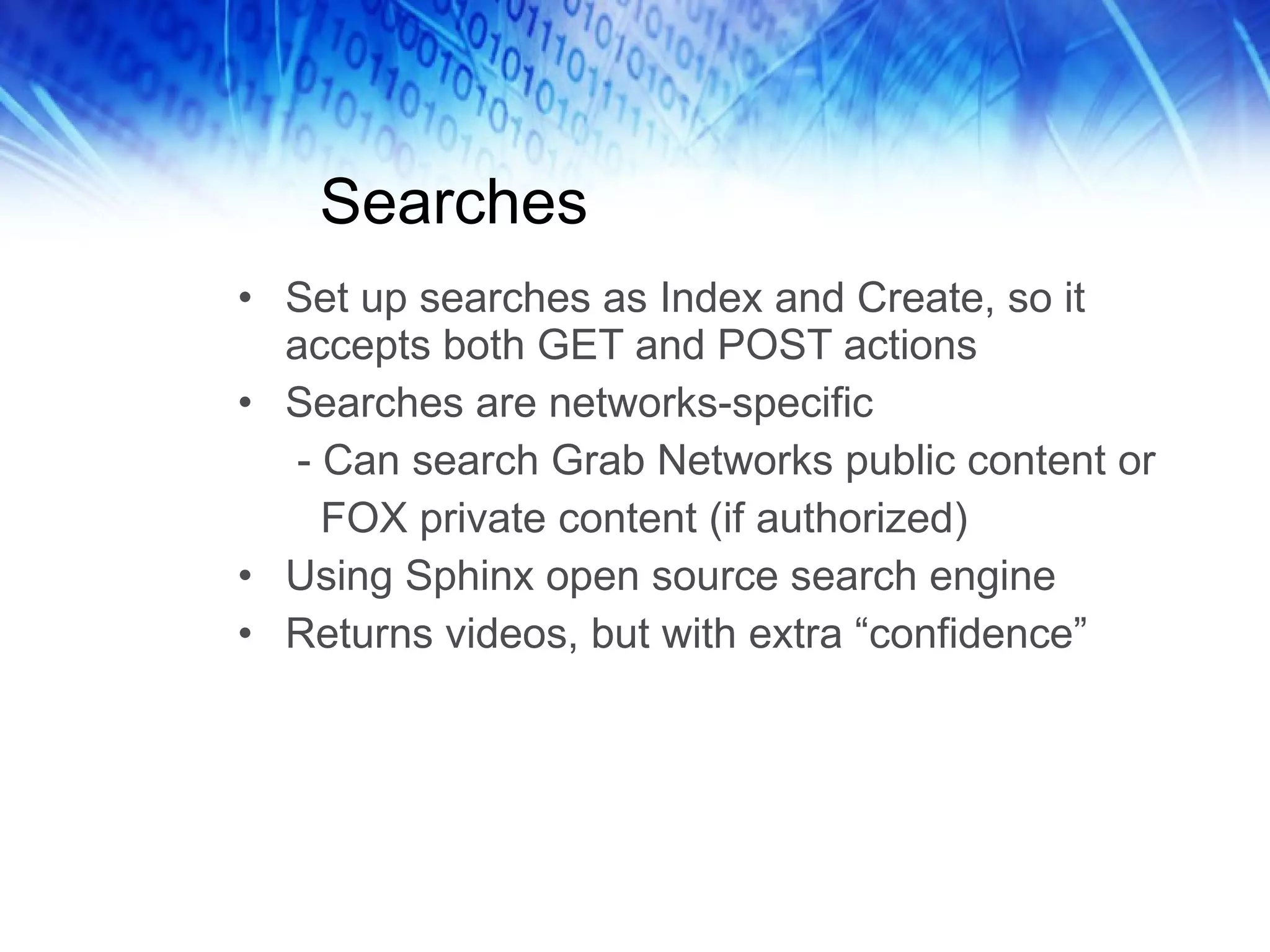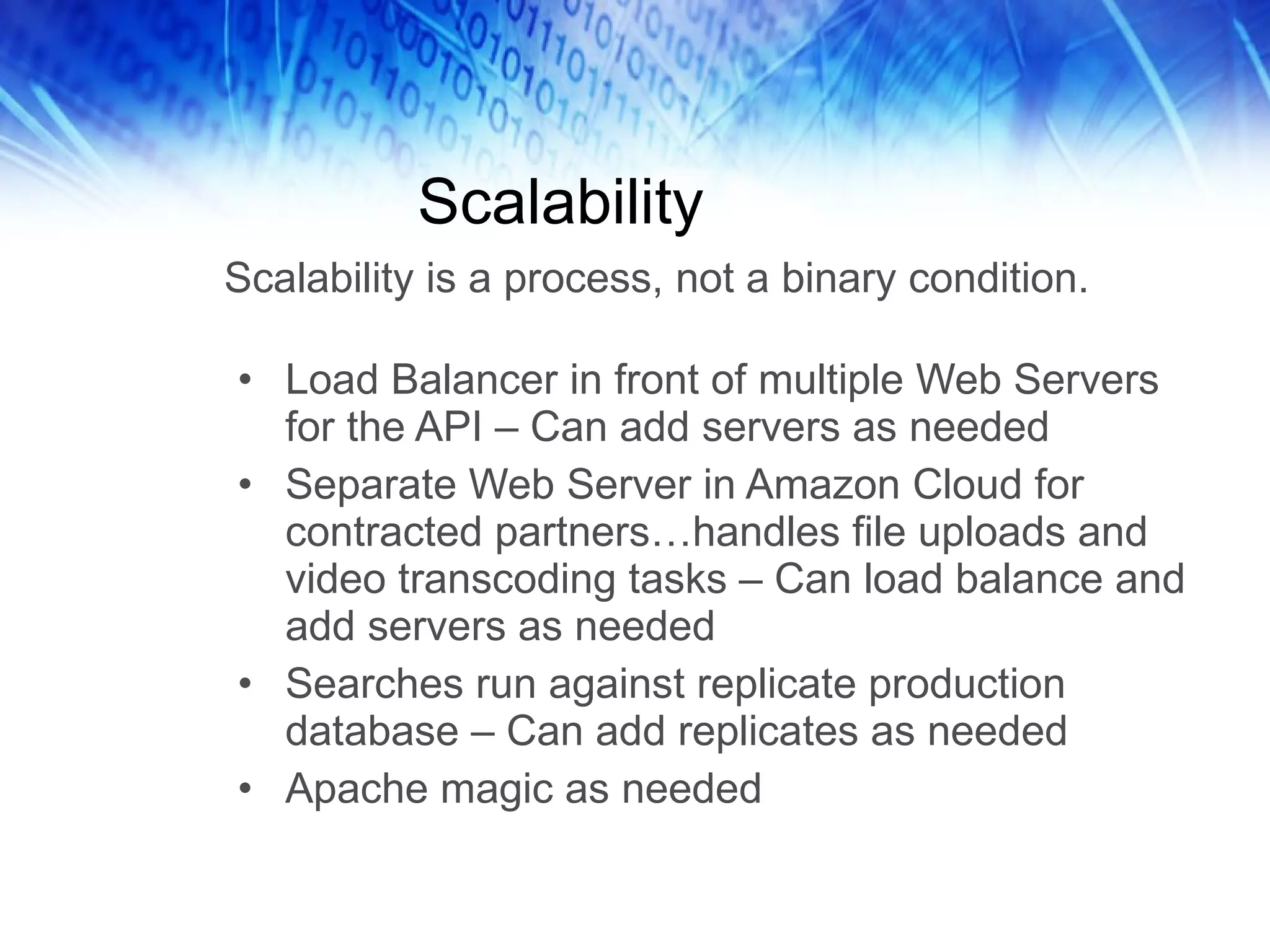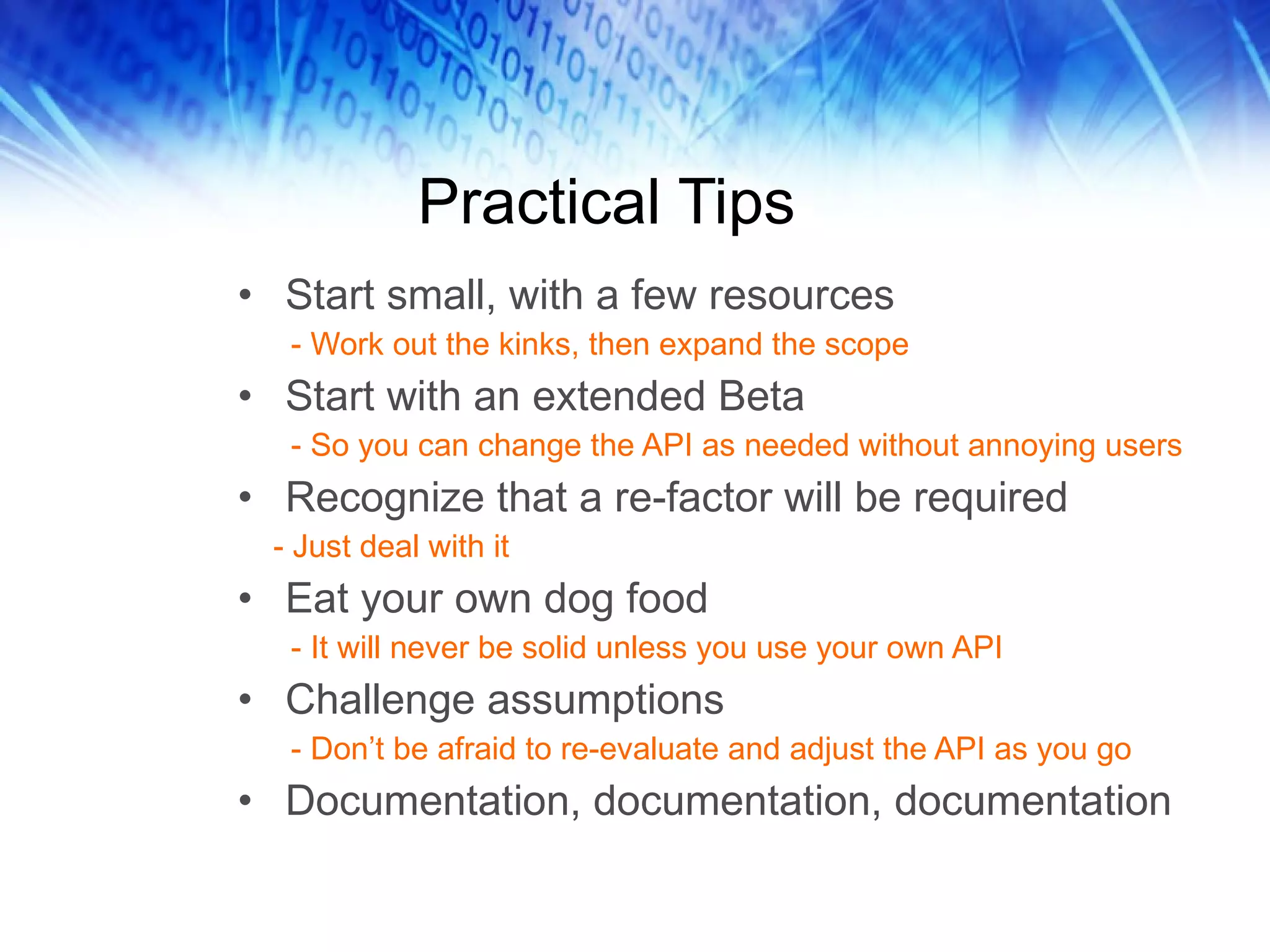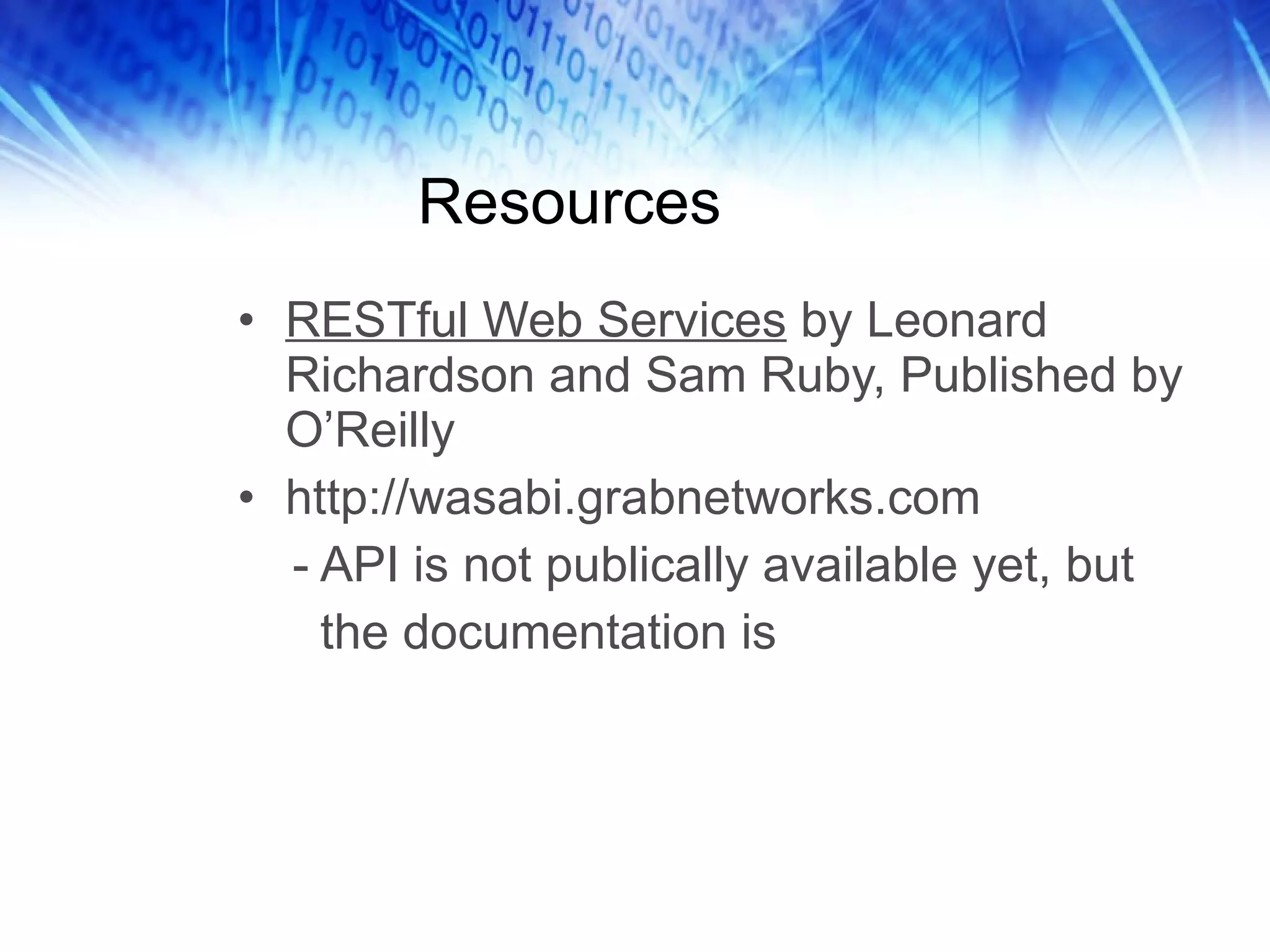David Keener, an experienced technical architect, discusses the complexities and best practices for creating a RESTful API, drawing on practical experiences from his work. Key topics include the importance of authentication, error handling, and designing an effective API framework that balances customer needs with company goals. The document emphasizes starting small, documenting thoroughly, and being open to iterative changes during development.
![Creating a World-Class By David Keener http://www.keenertech.com RESTful Web Services API [email_address]](https://image.slidesharecdn.com/creatingrestfulapi-091219183844-phpapp01/75/Creating-a-World-Class-RESTful-Web-Services-API-1-2048.jpg)
![But First, Who Am I? Blog: http://www.keenertech.com (New Rails-based version in late June) Email: [email_address] David Keener I’m a technical architect and writer with over 20 years of experience. Been doing web applications Since 1997, and Rails applications since version 1.1. I’m a Technical Architect for Grab Networks , the company known for streaming the Beijing Olympics over the web and for distributing more news videos in the US than any other company except MSNBC.](https://image.slidesharecdn.com/creatingrestfulapi-091219183844-phpapp01/75/Creating-a-World-Class-RESTful-Web-Services-API-2-2048.jpg)
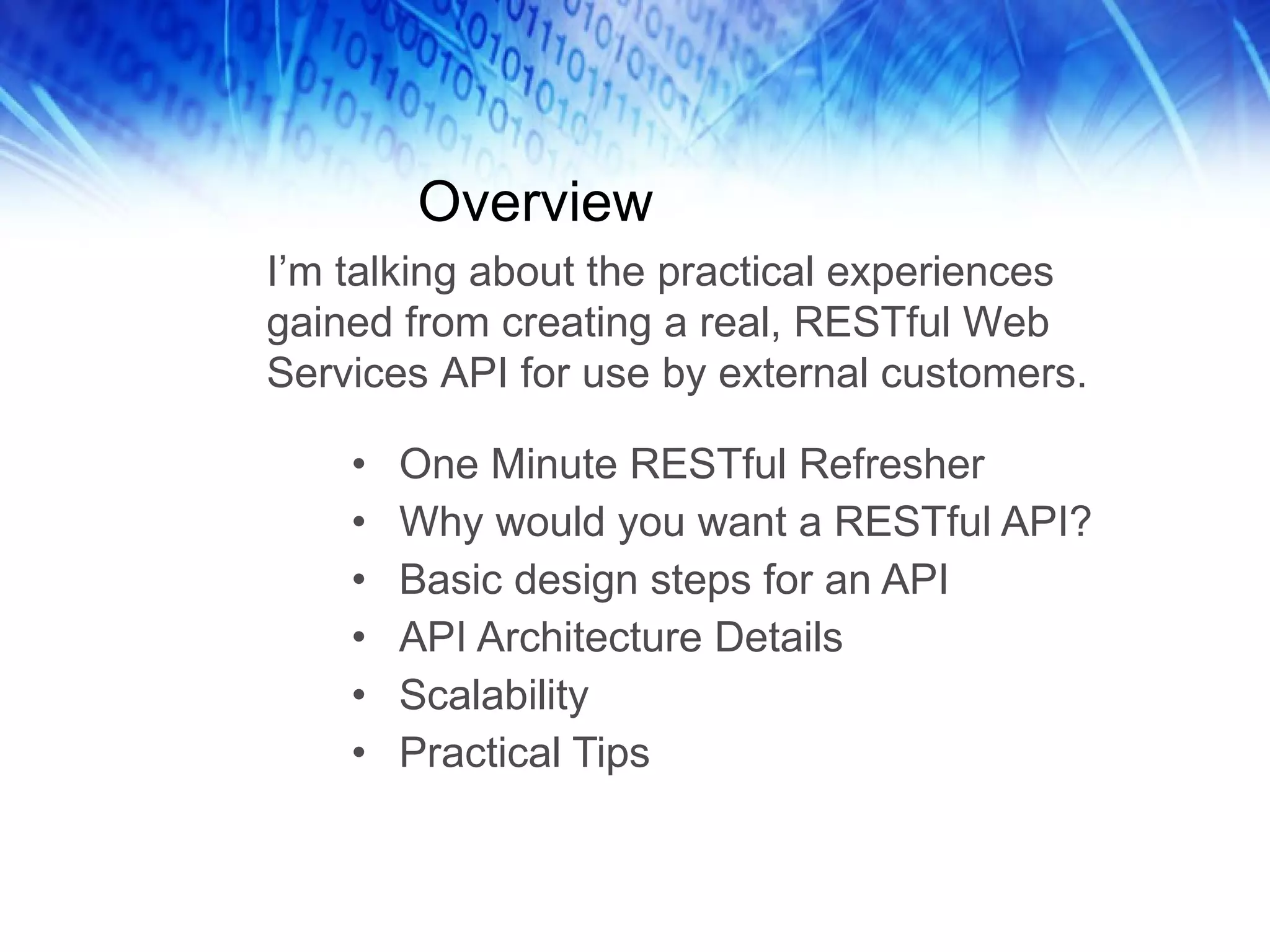
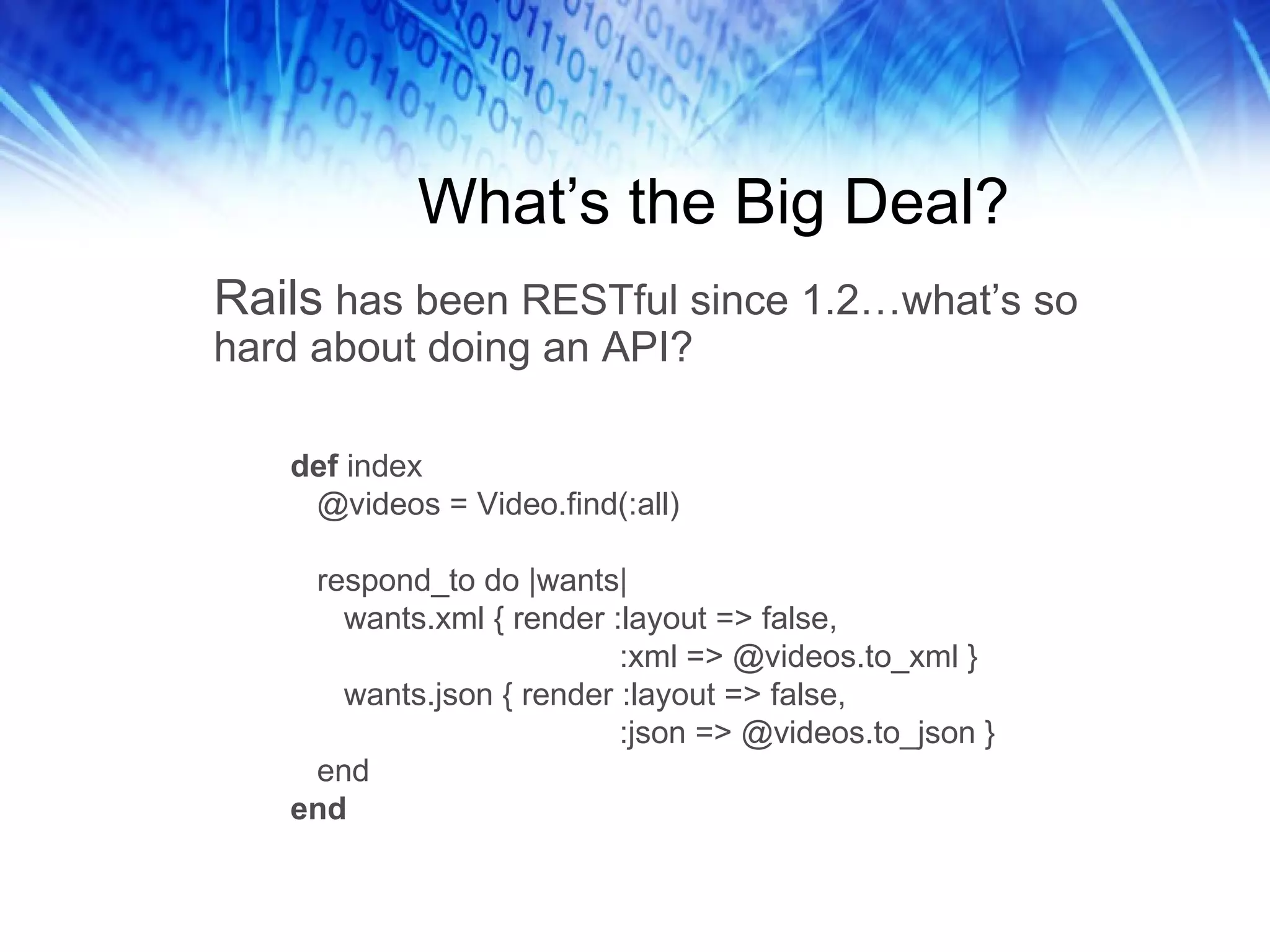
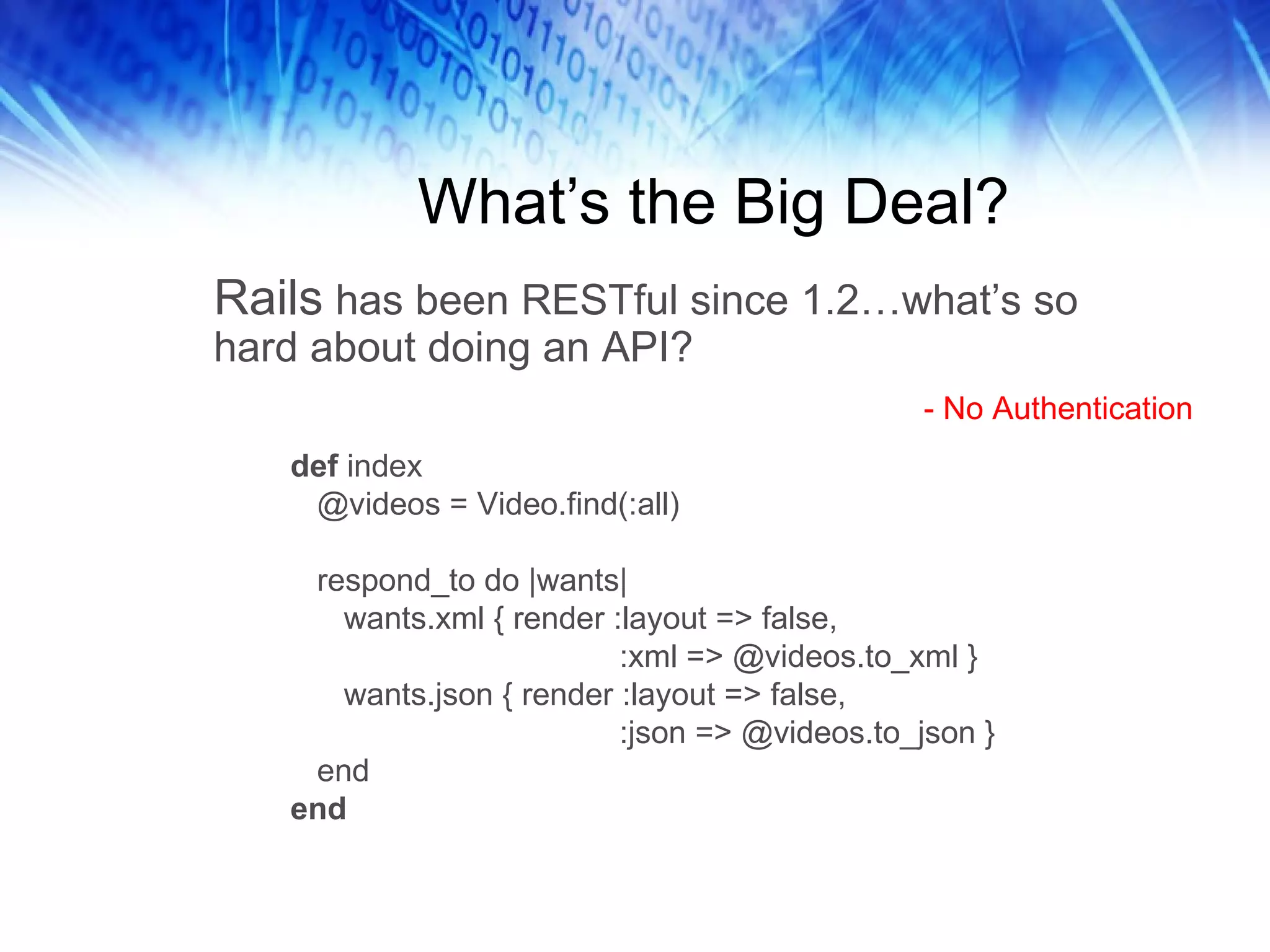
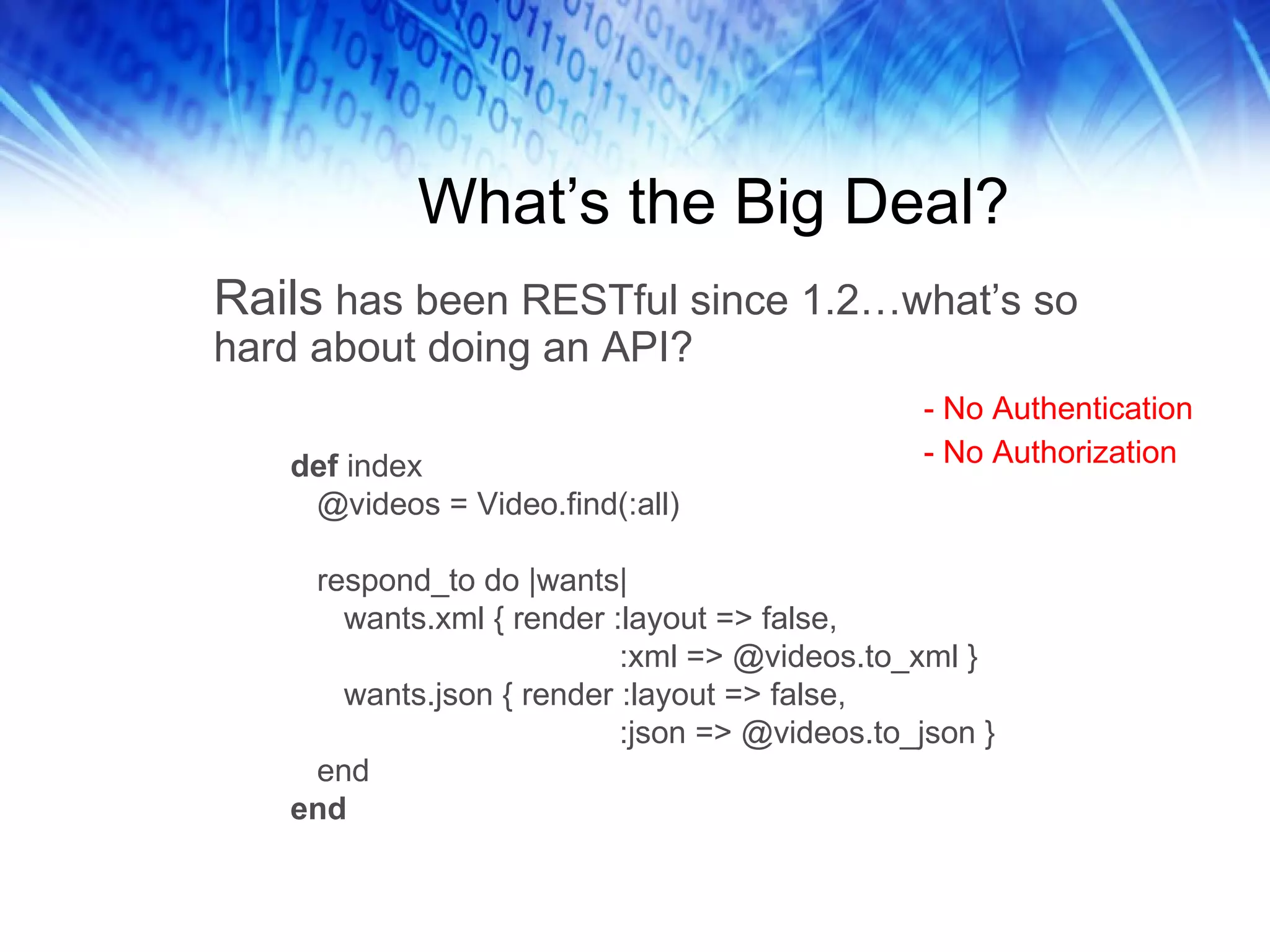
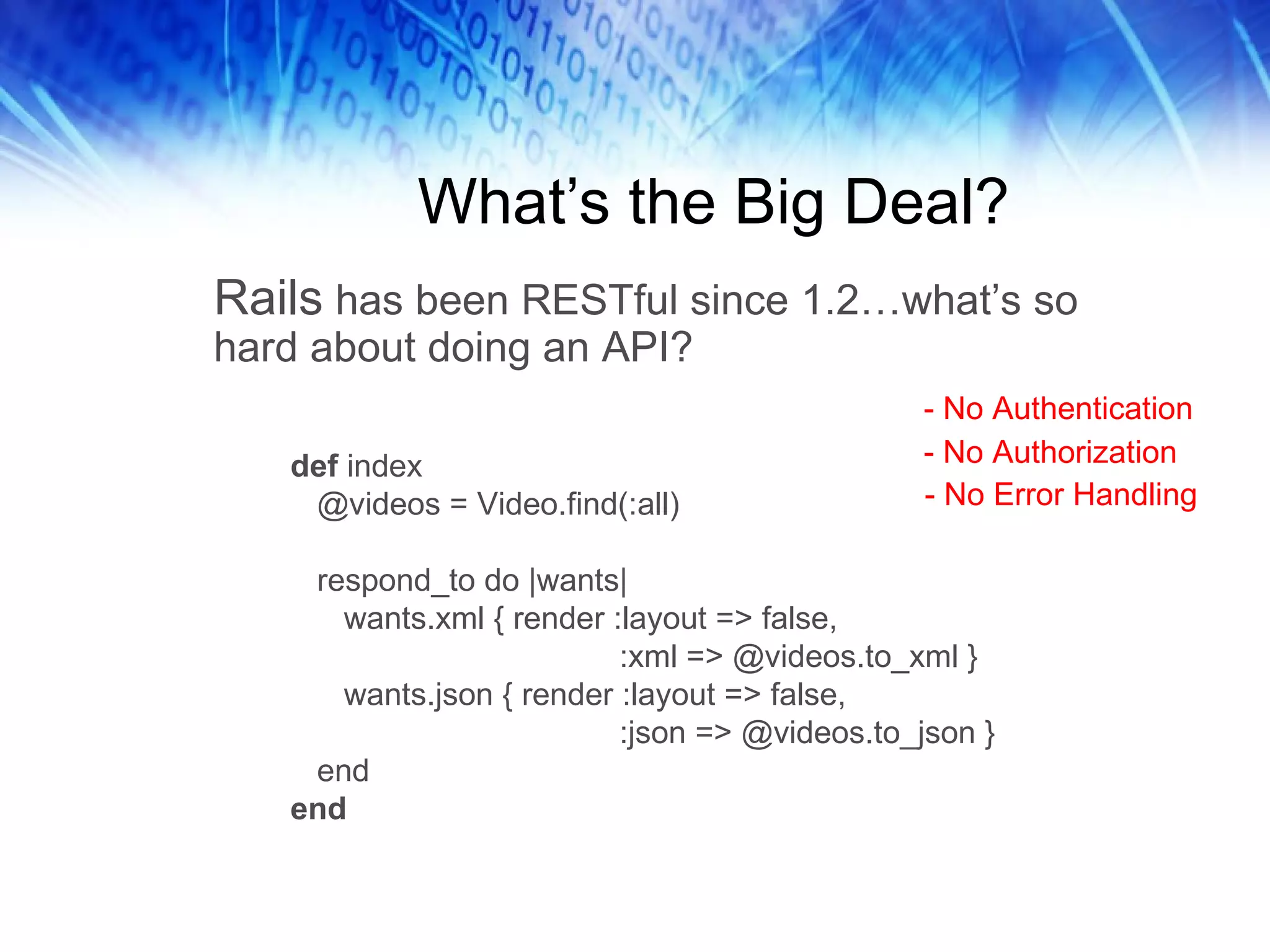
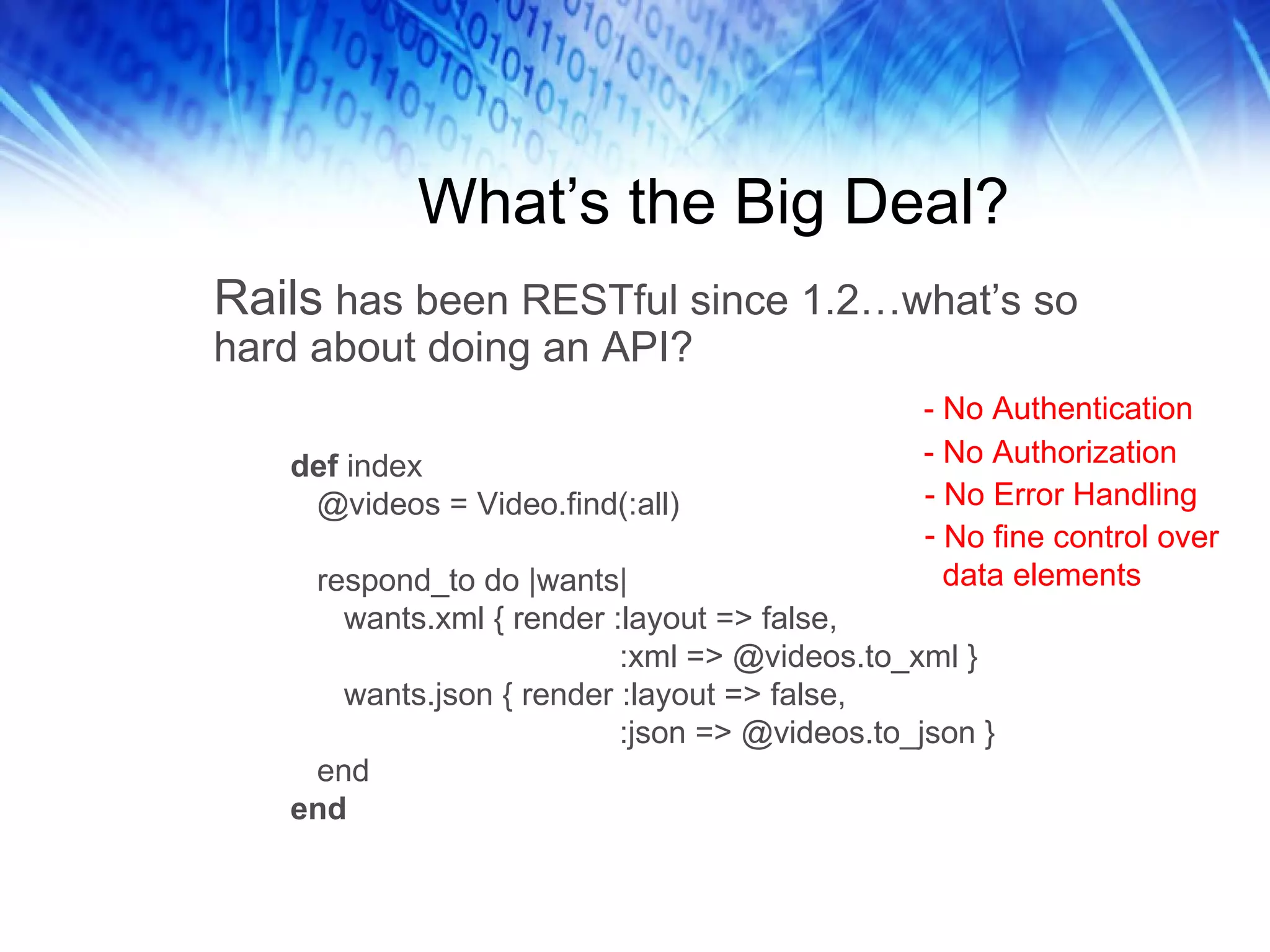
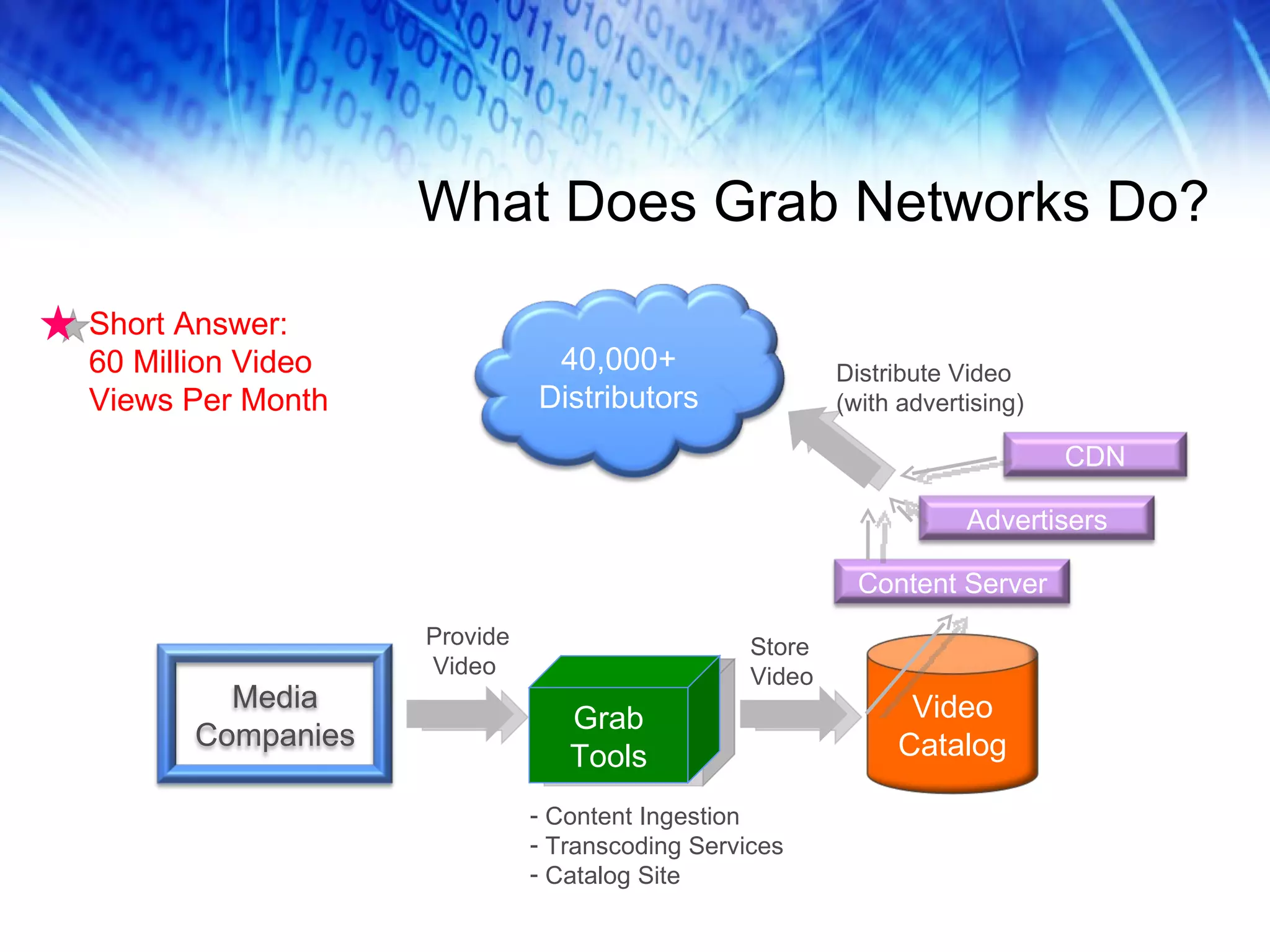
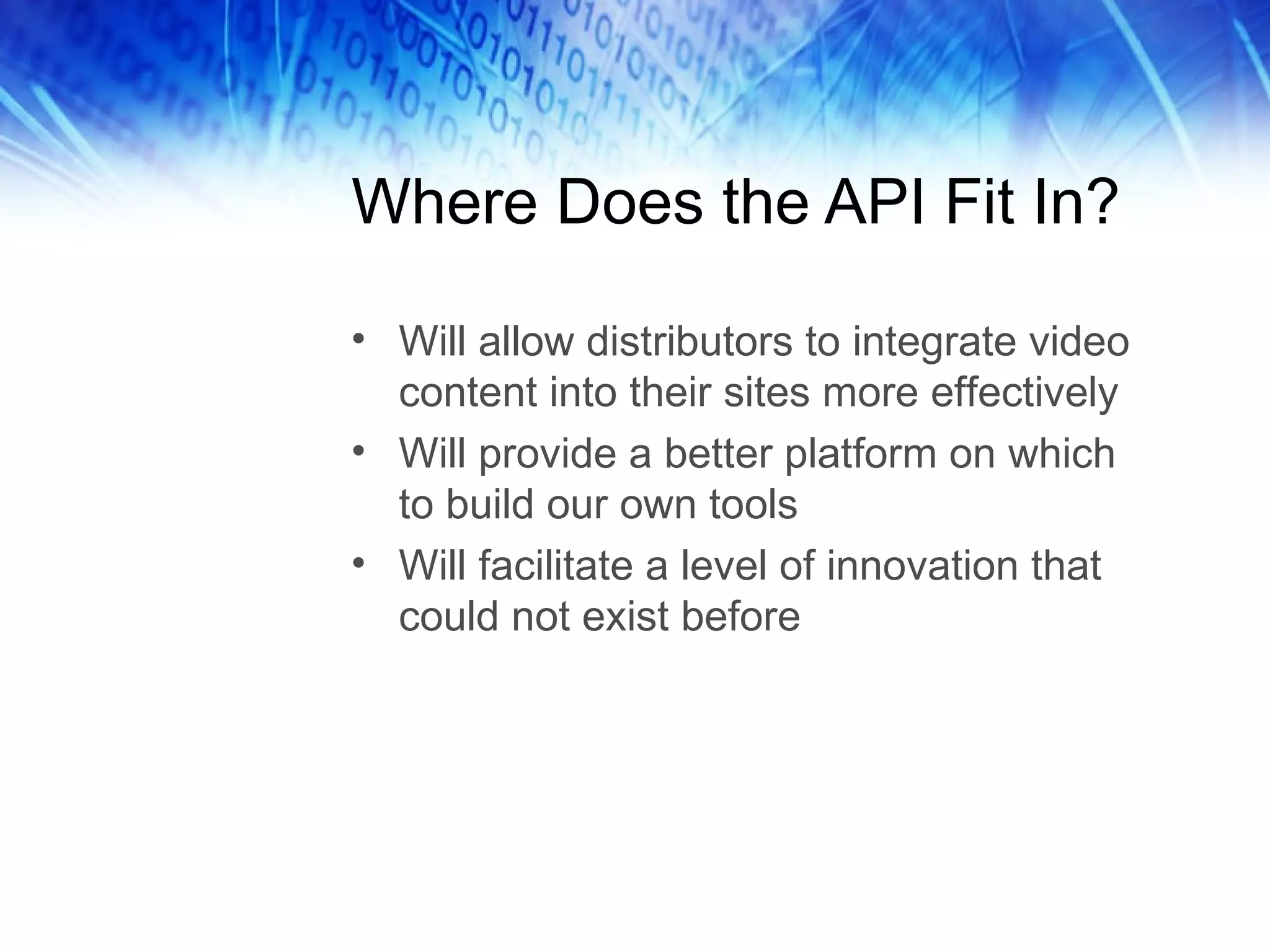

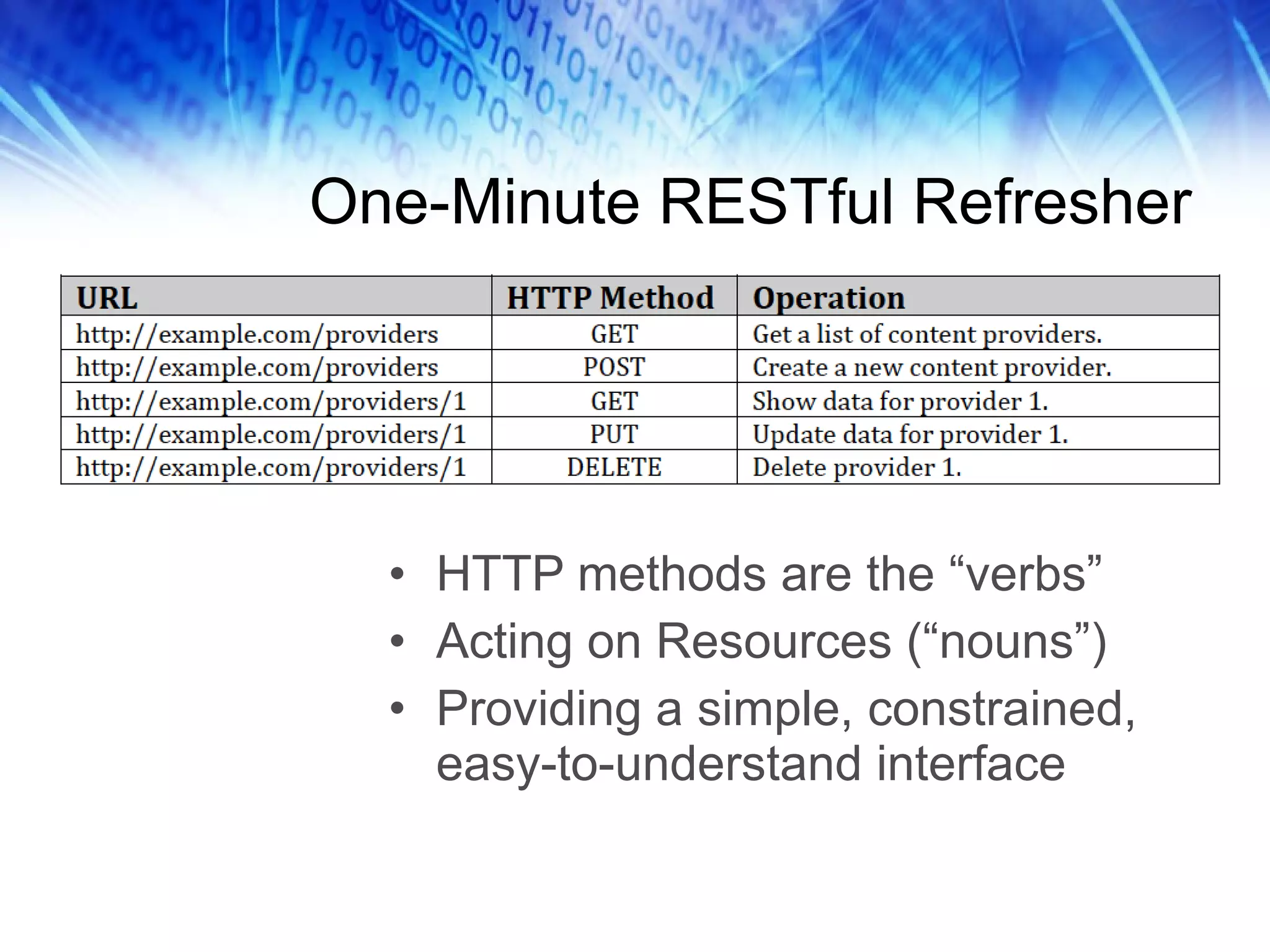
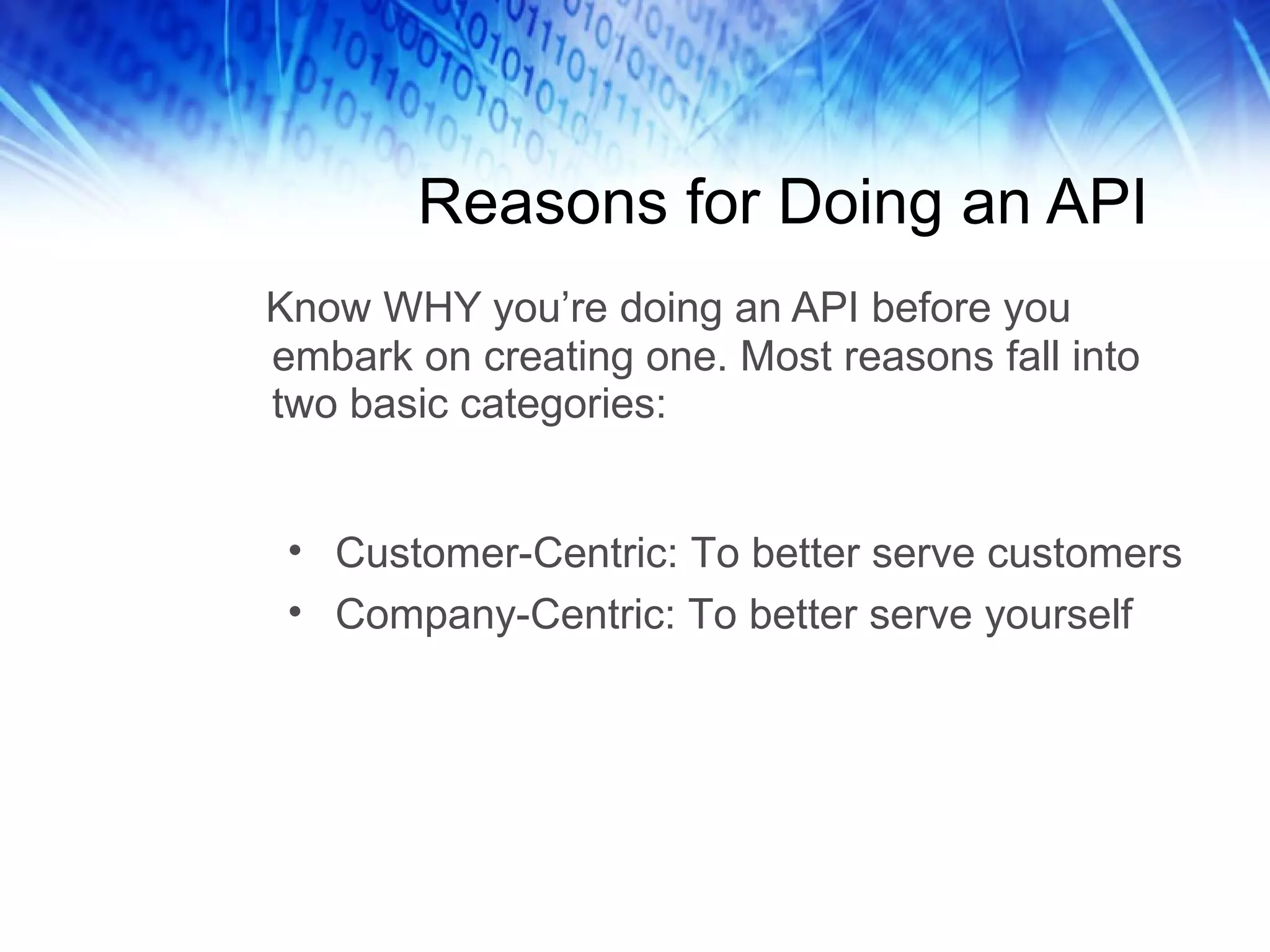
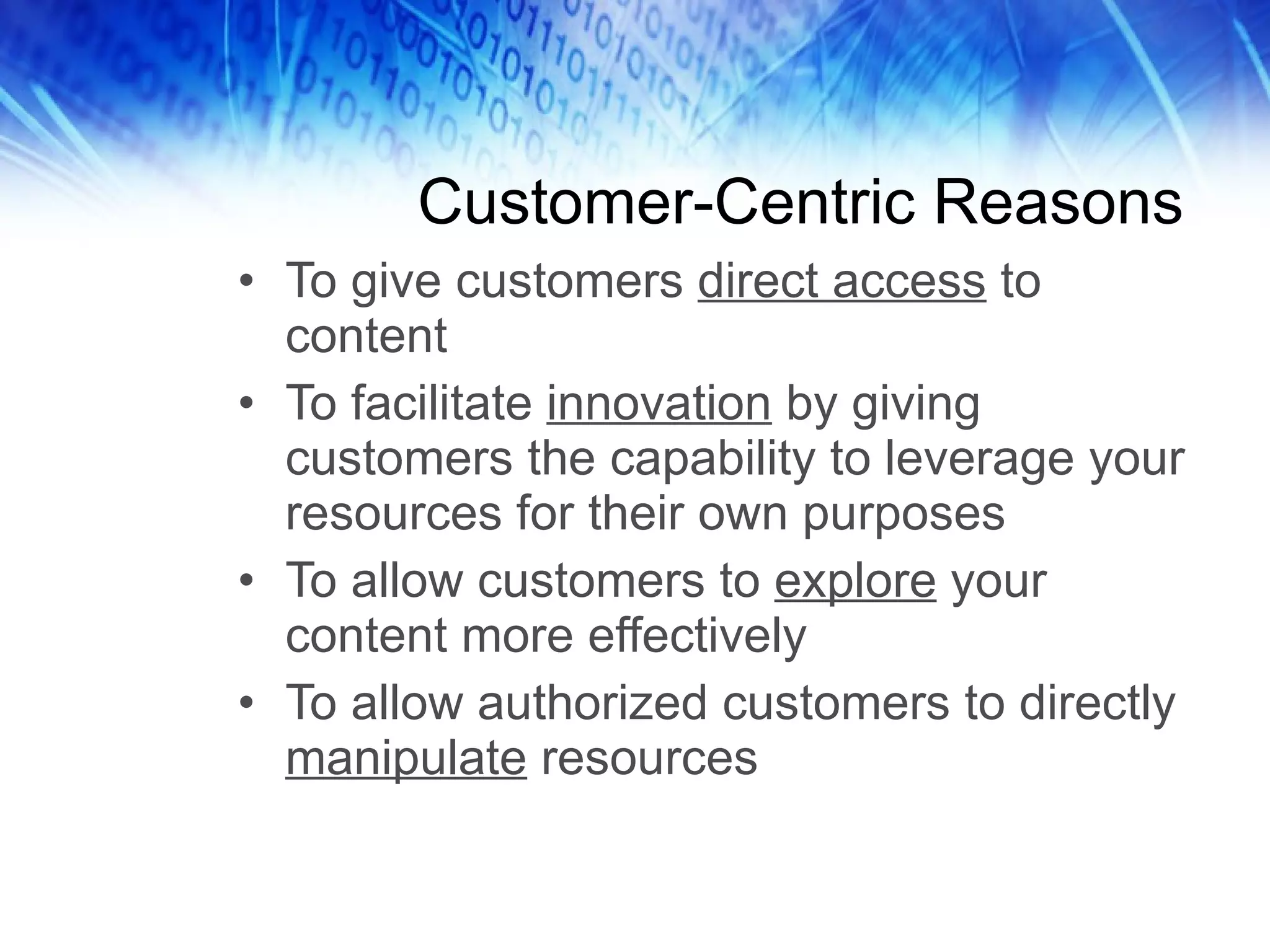
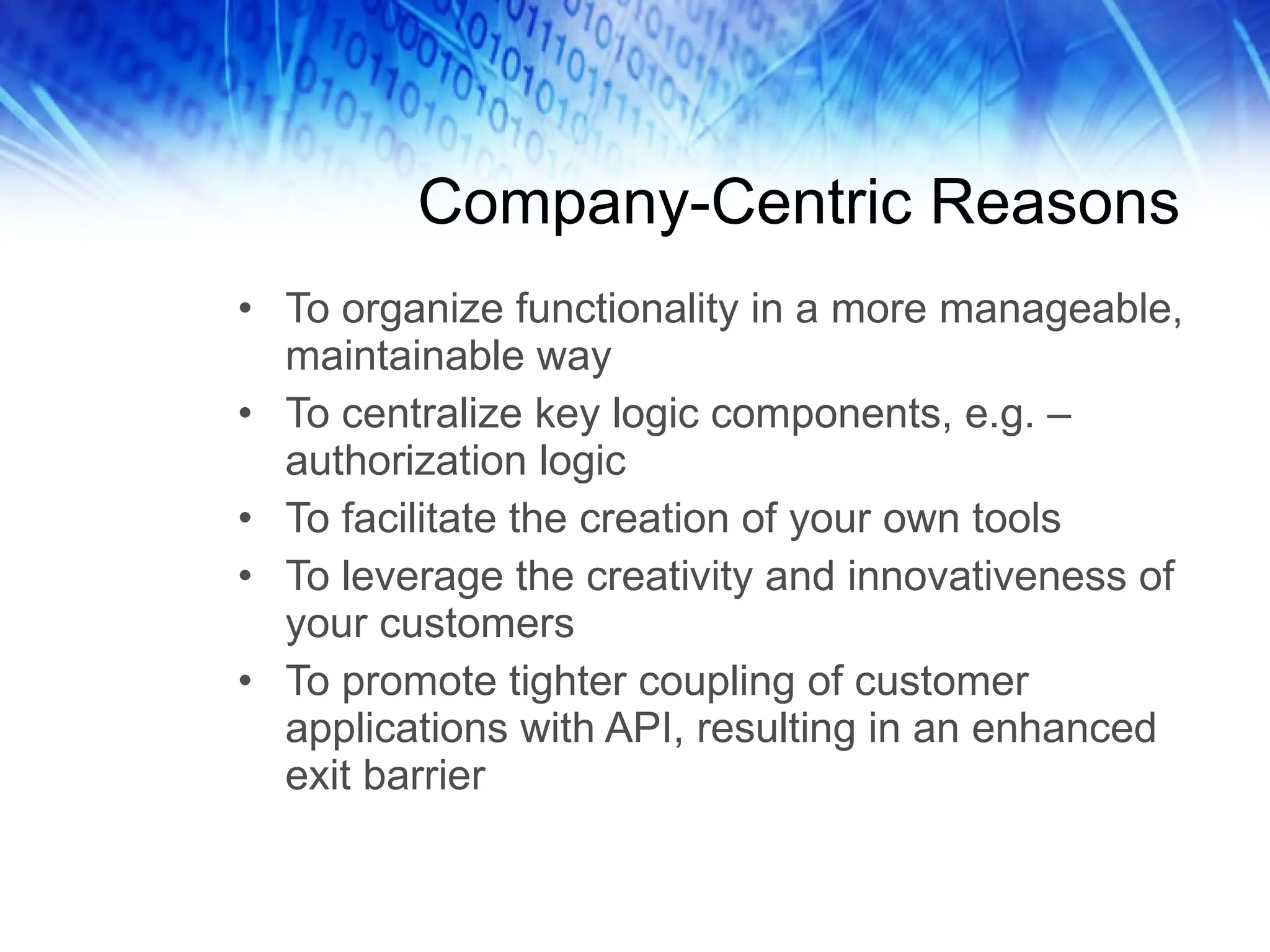
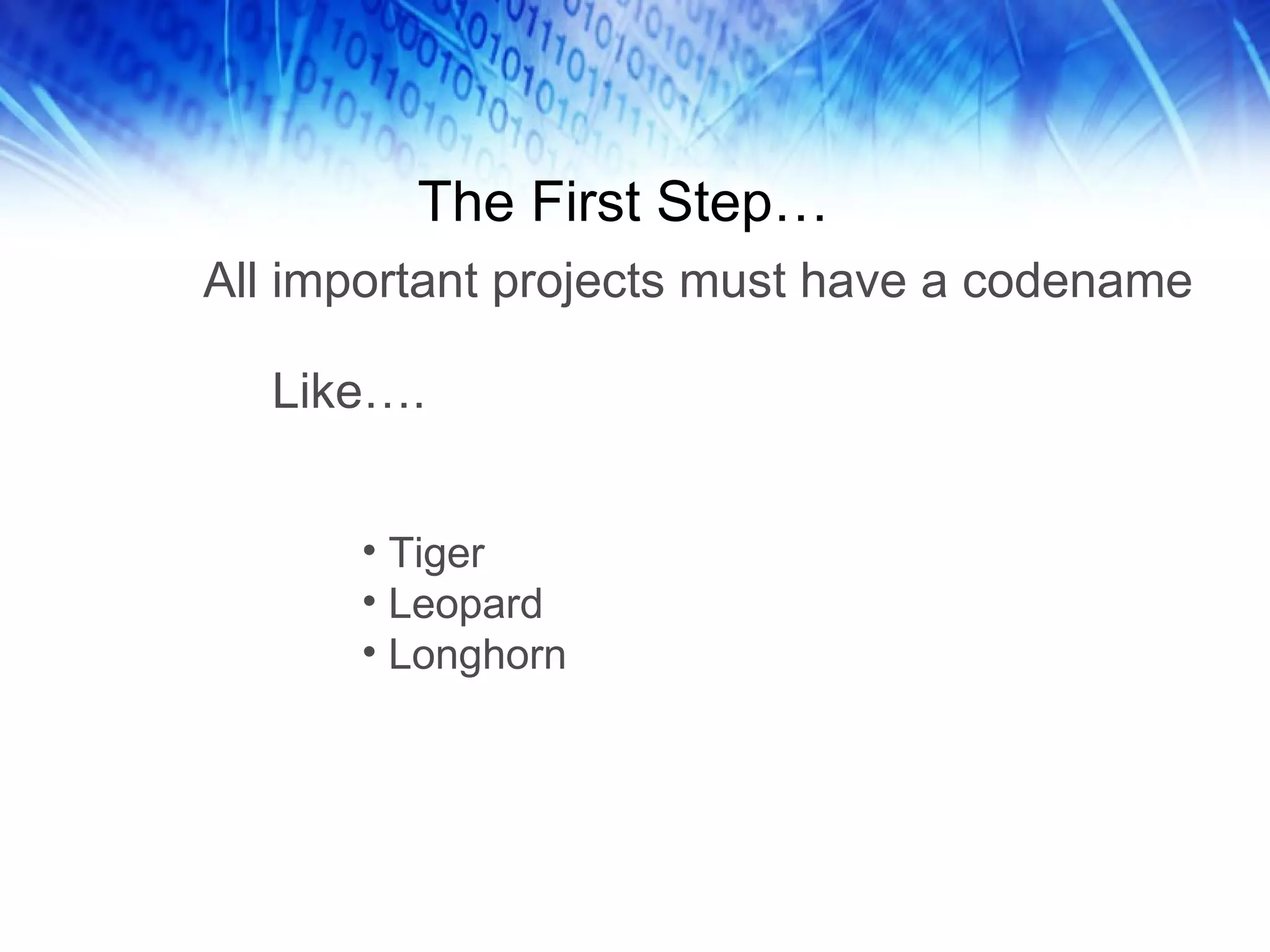
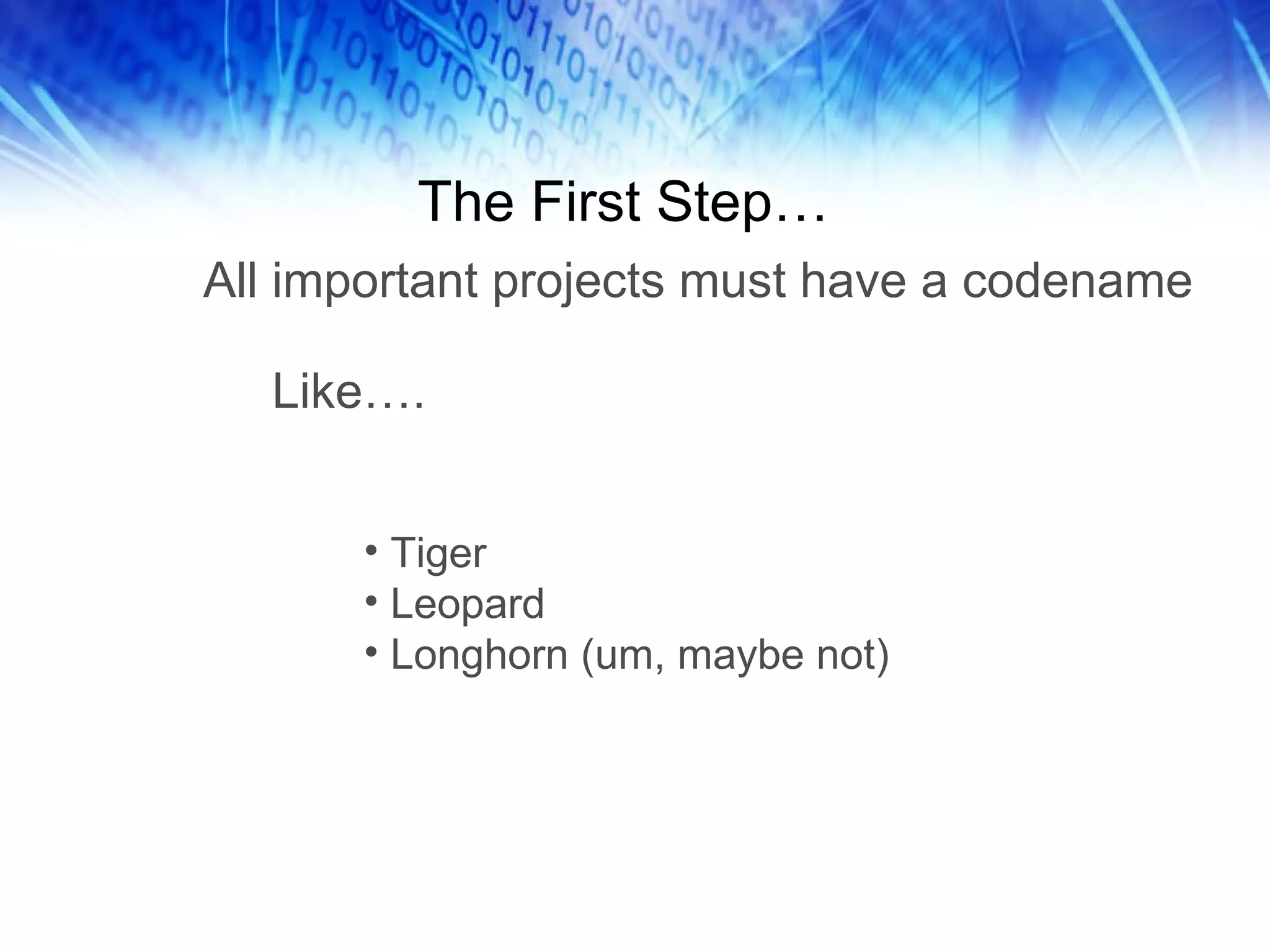

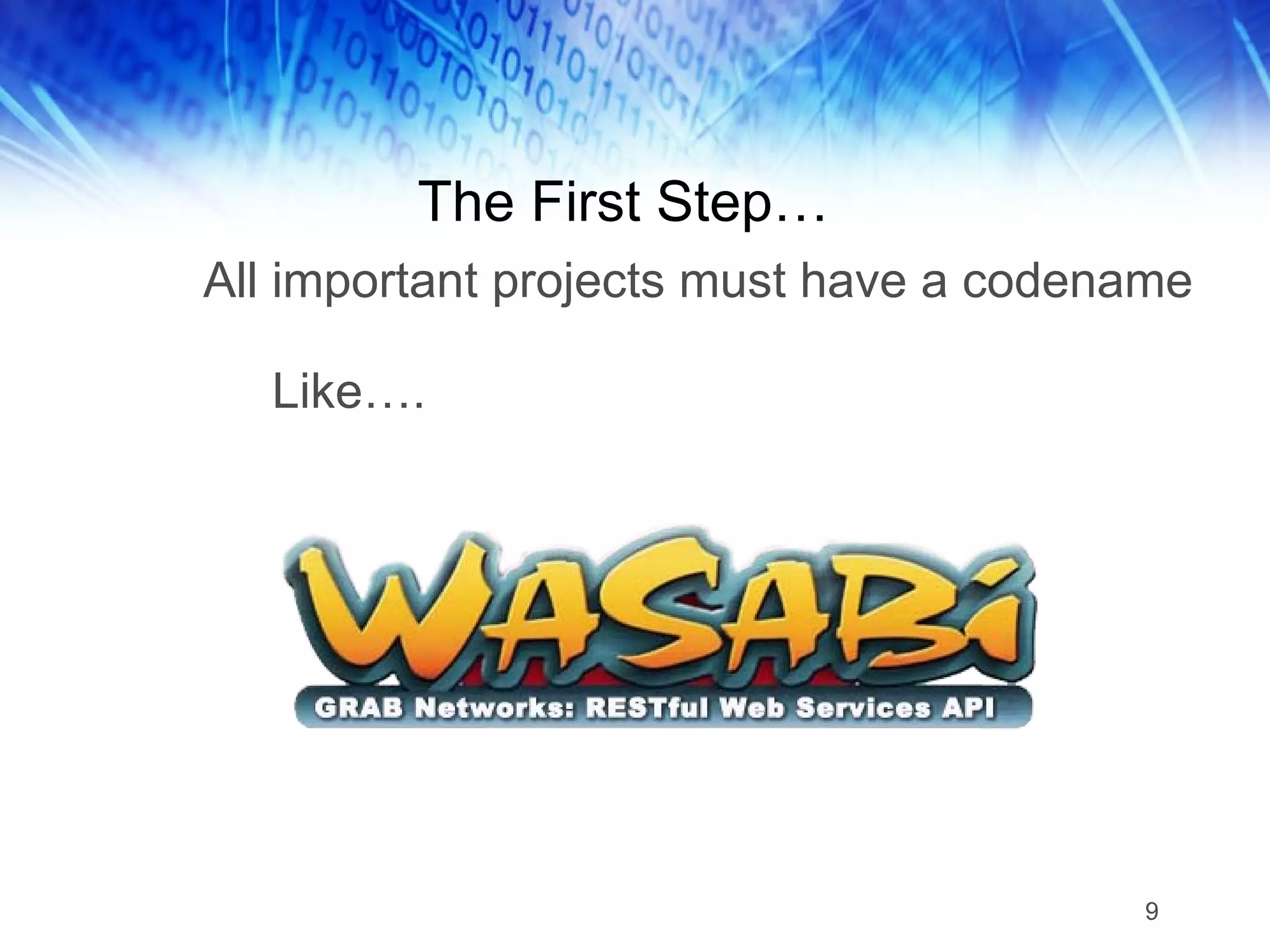
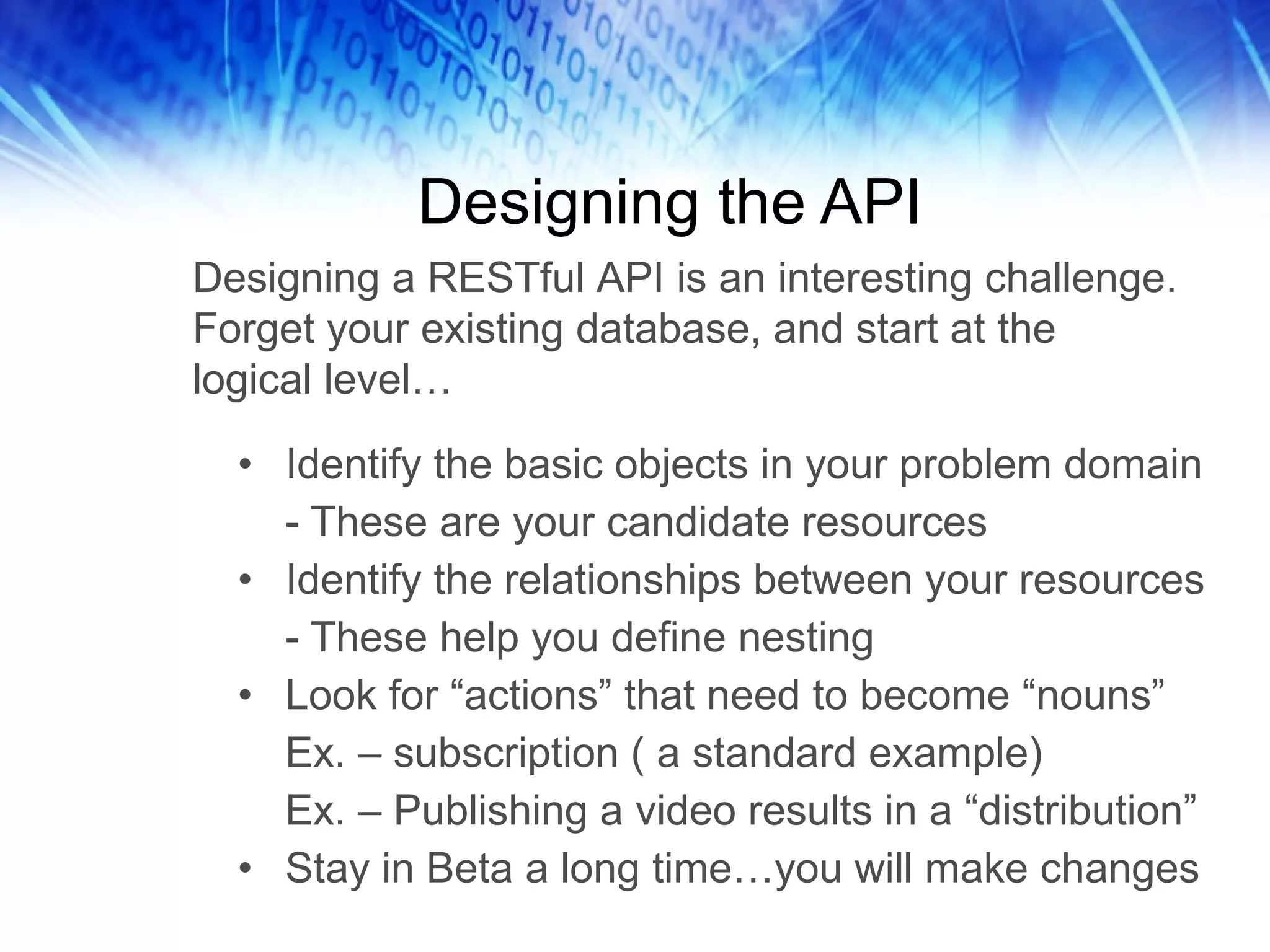
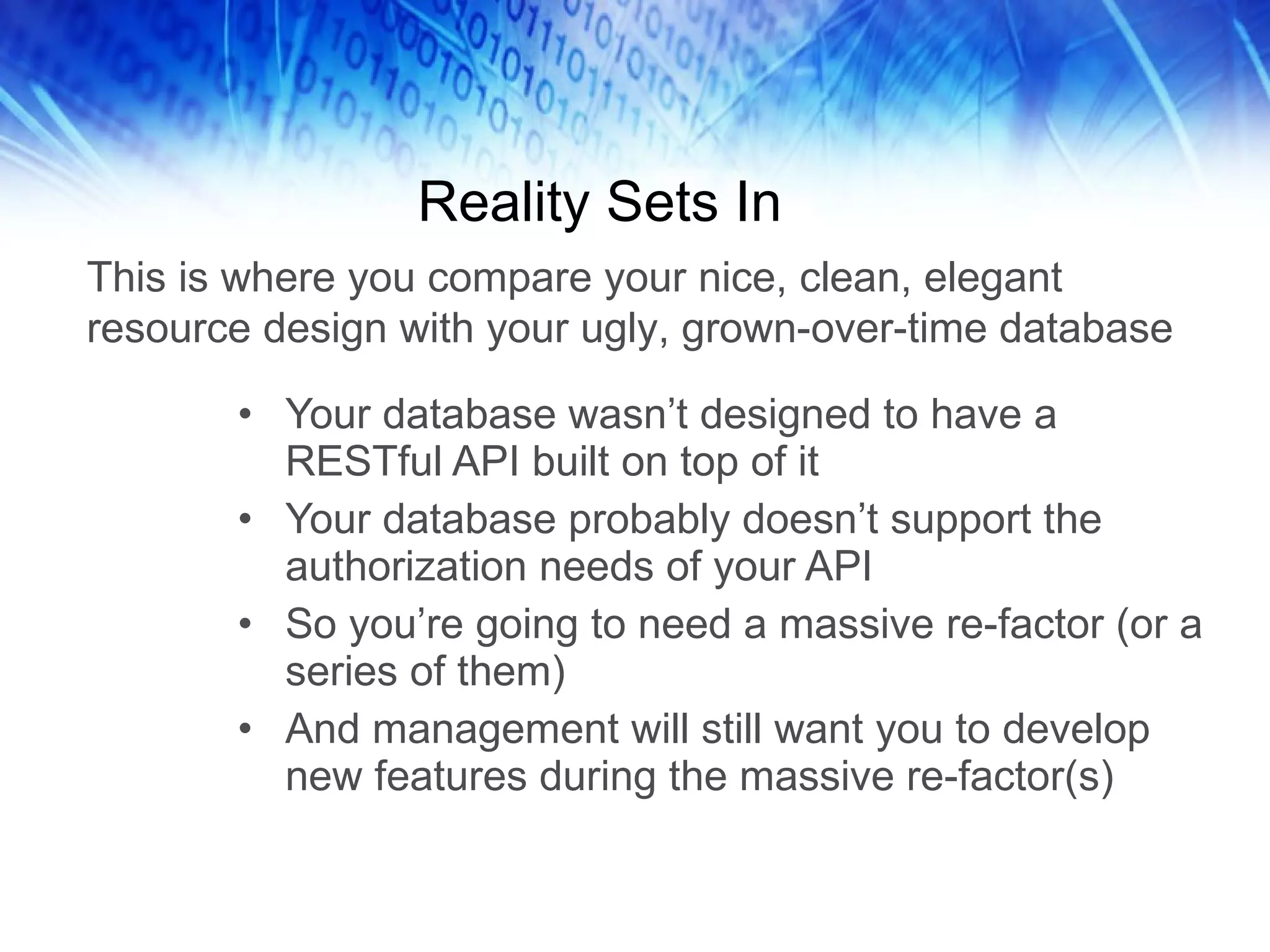
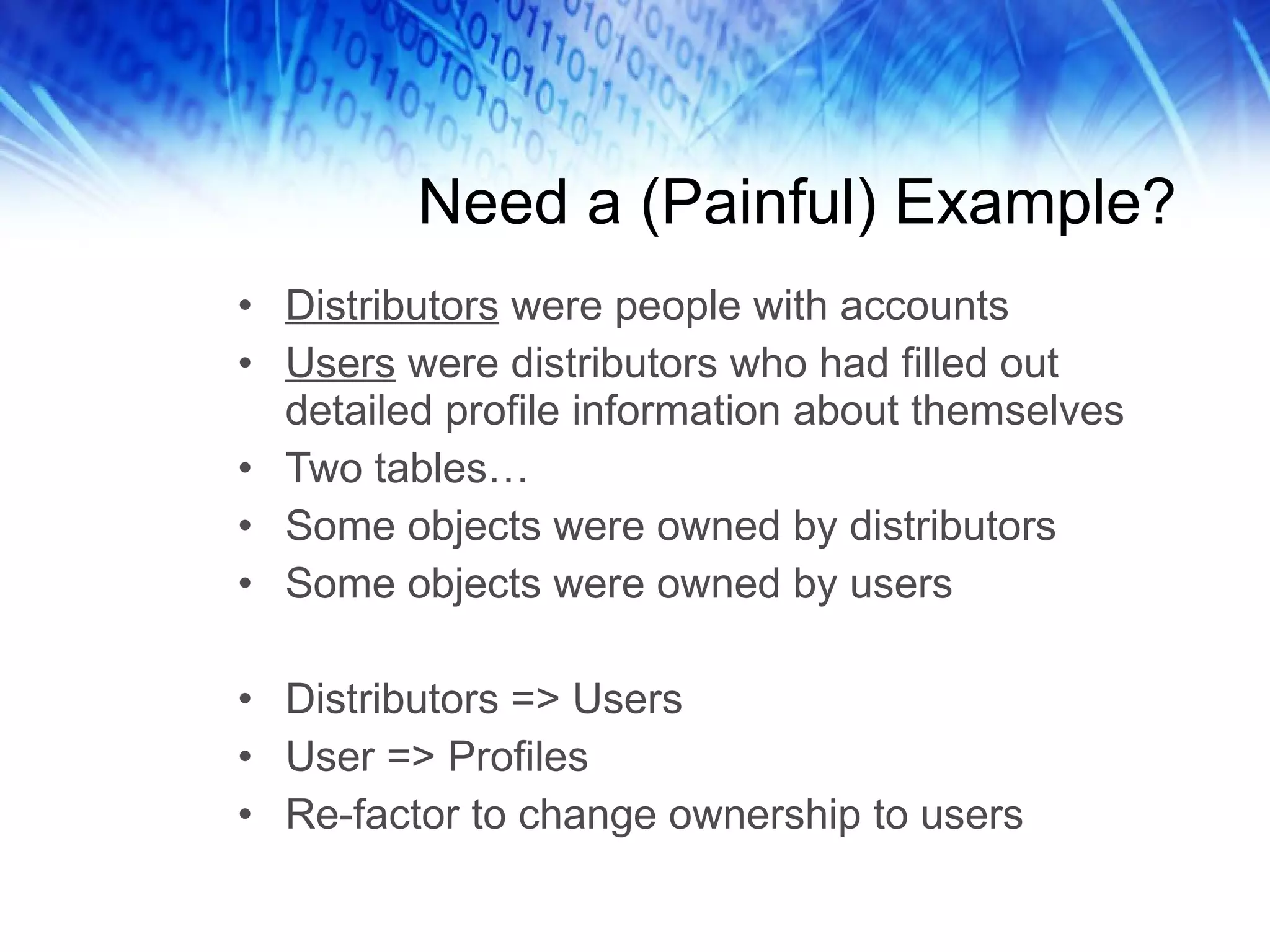
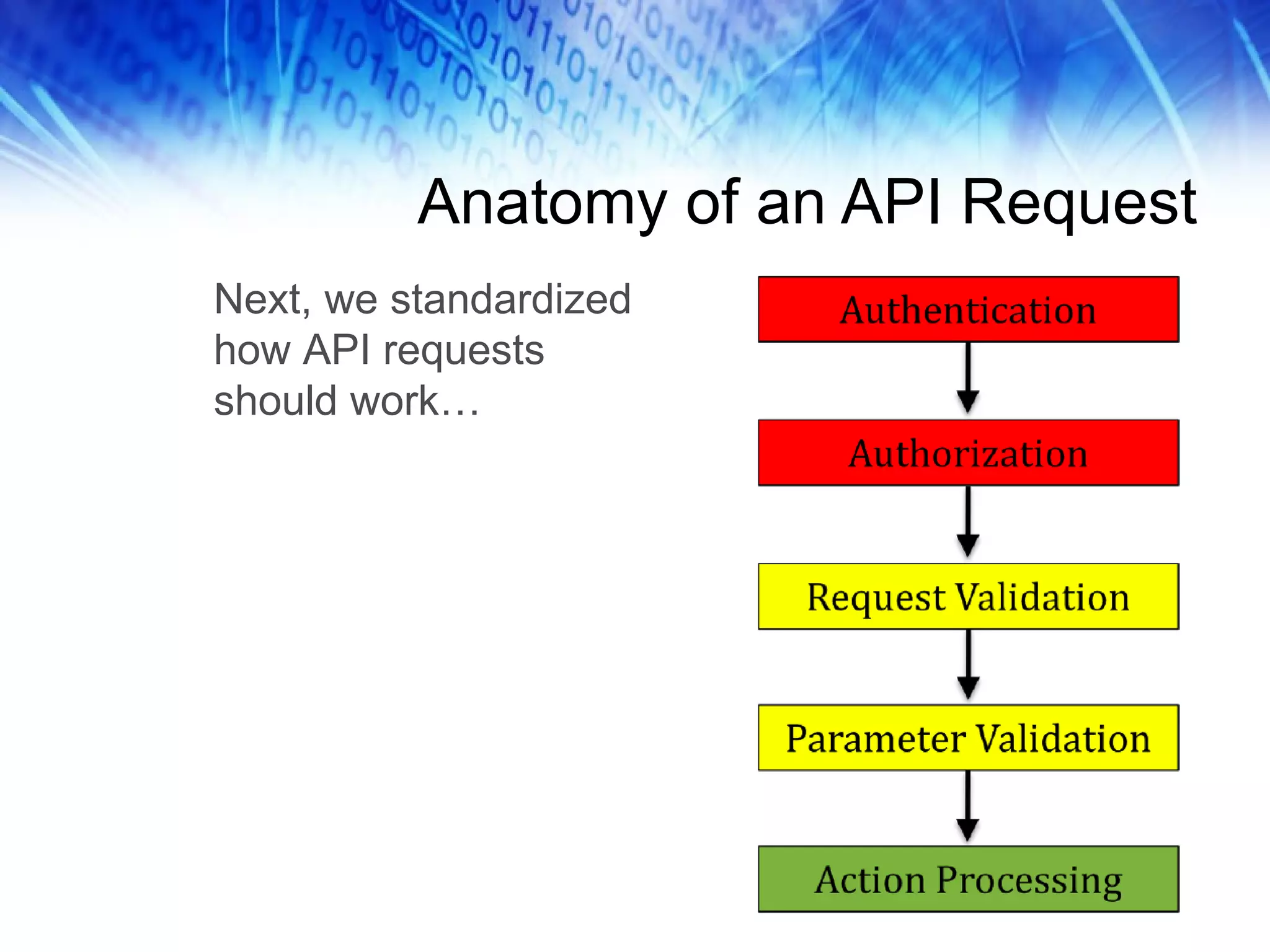
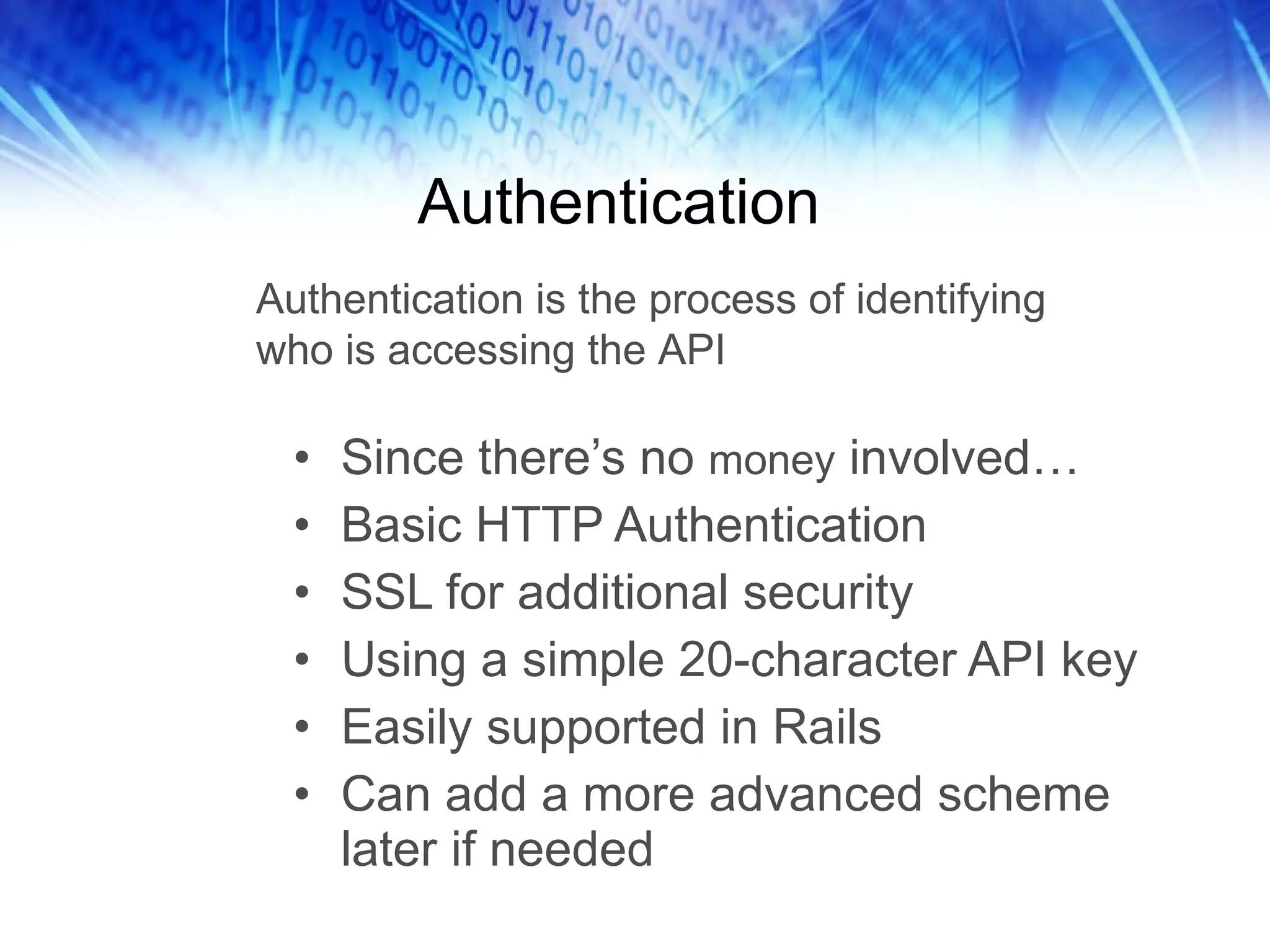
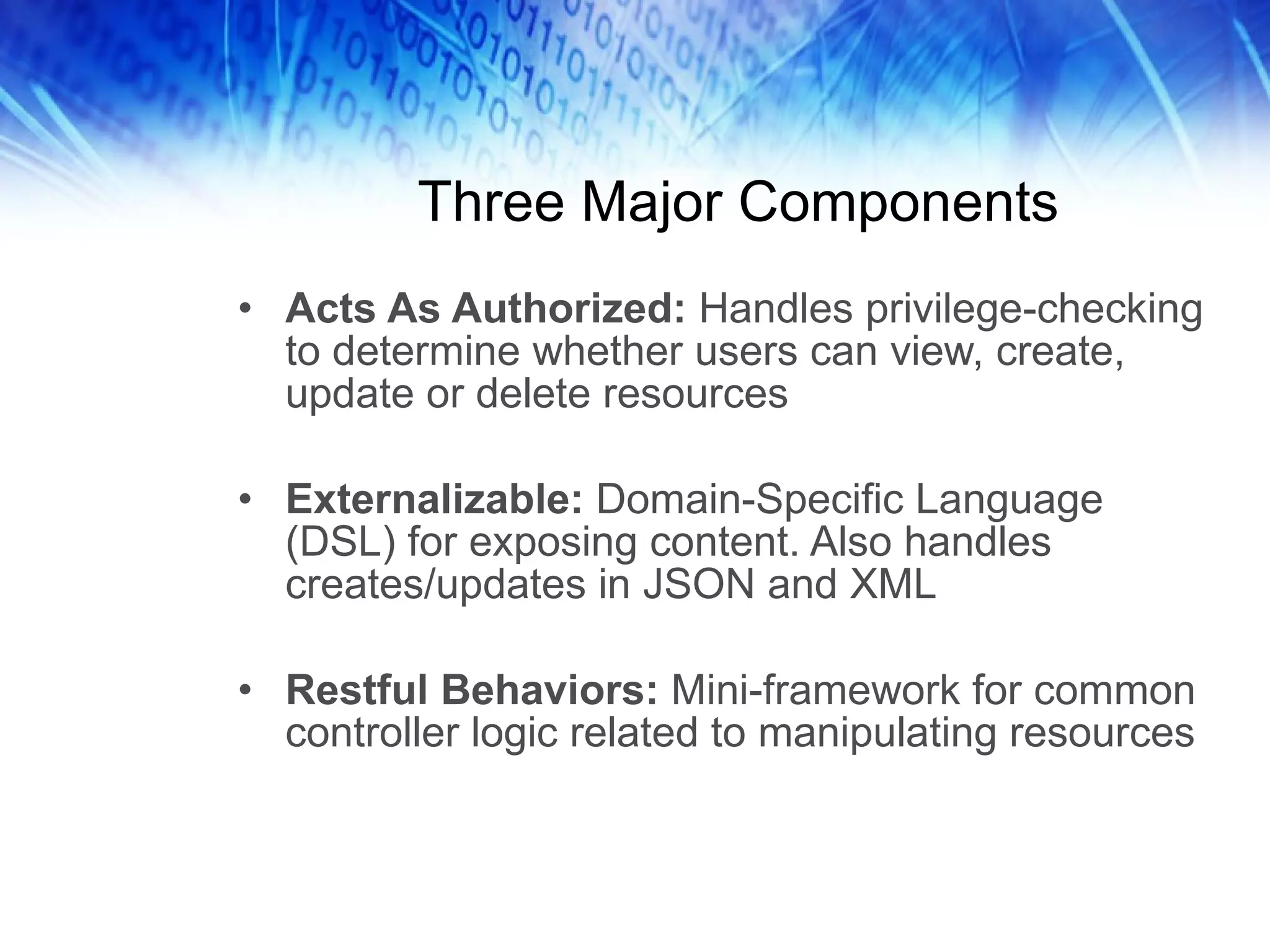
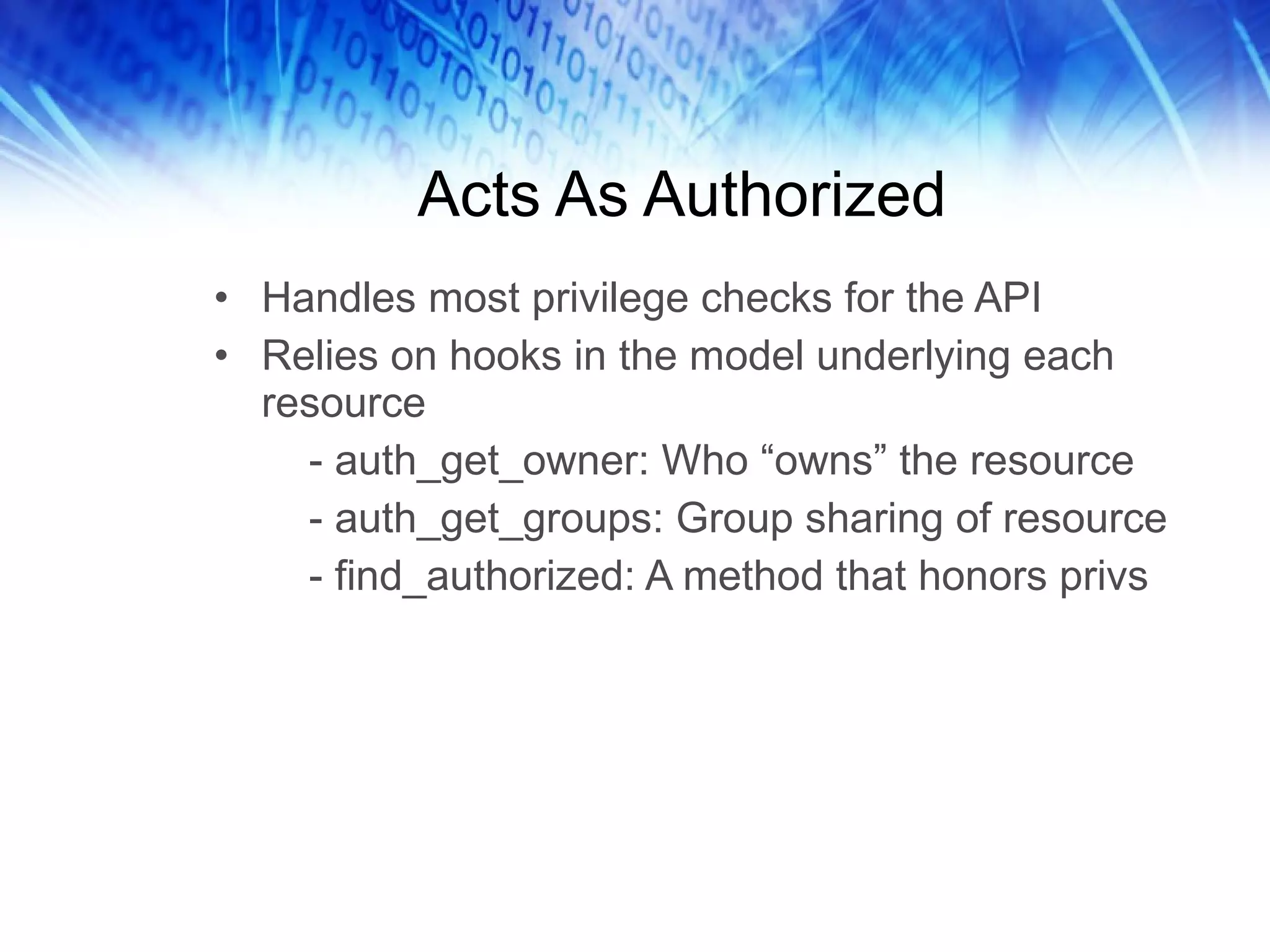
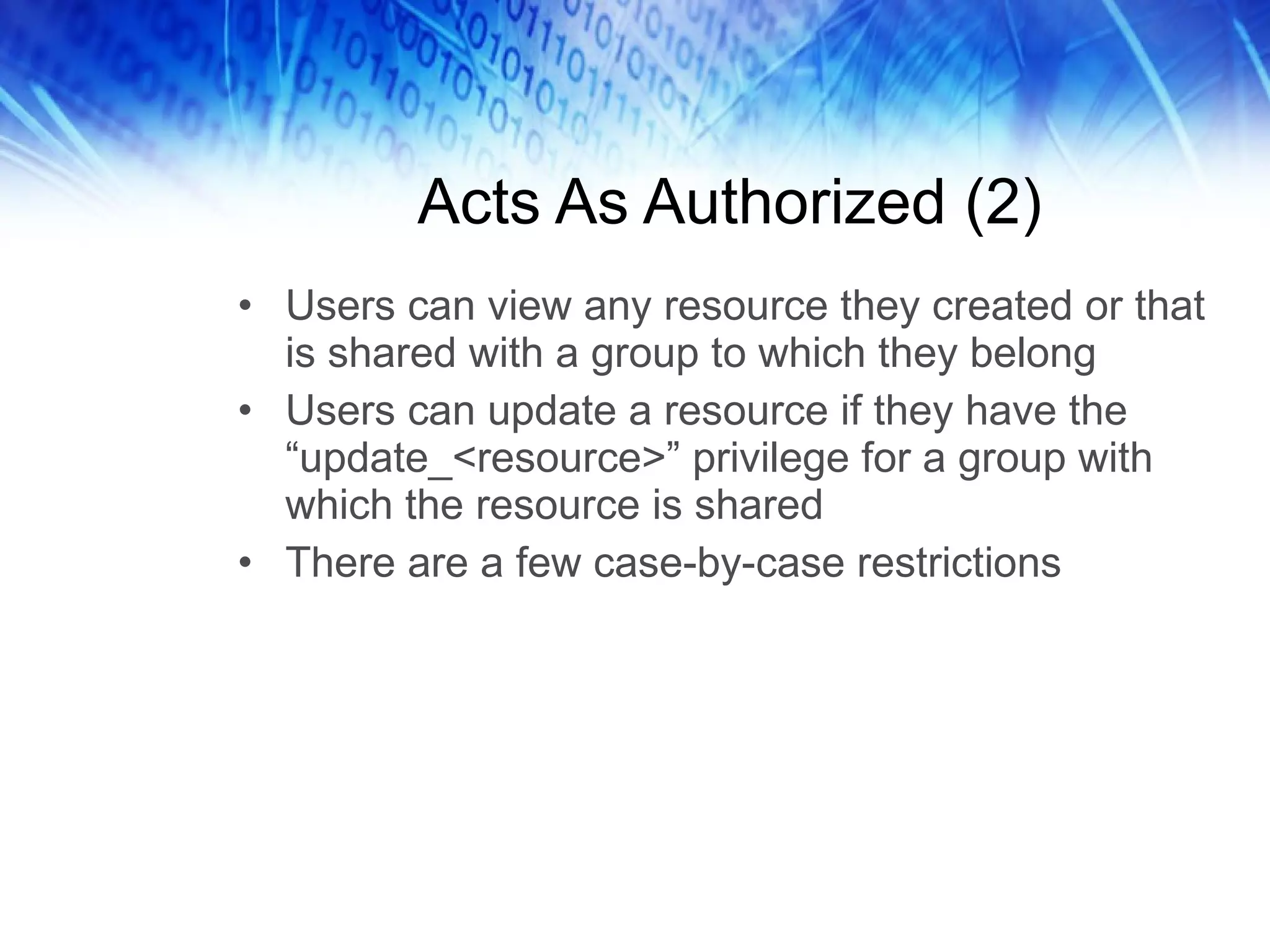
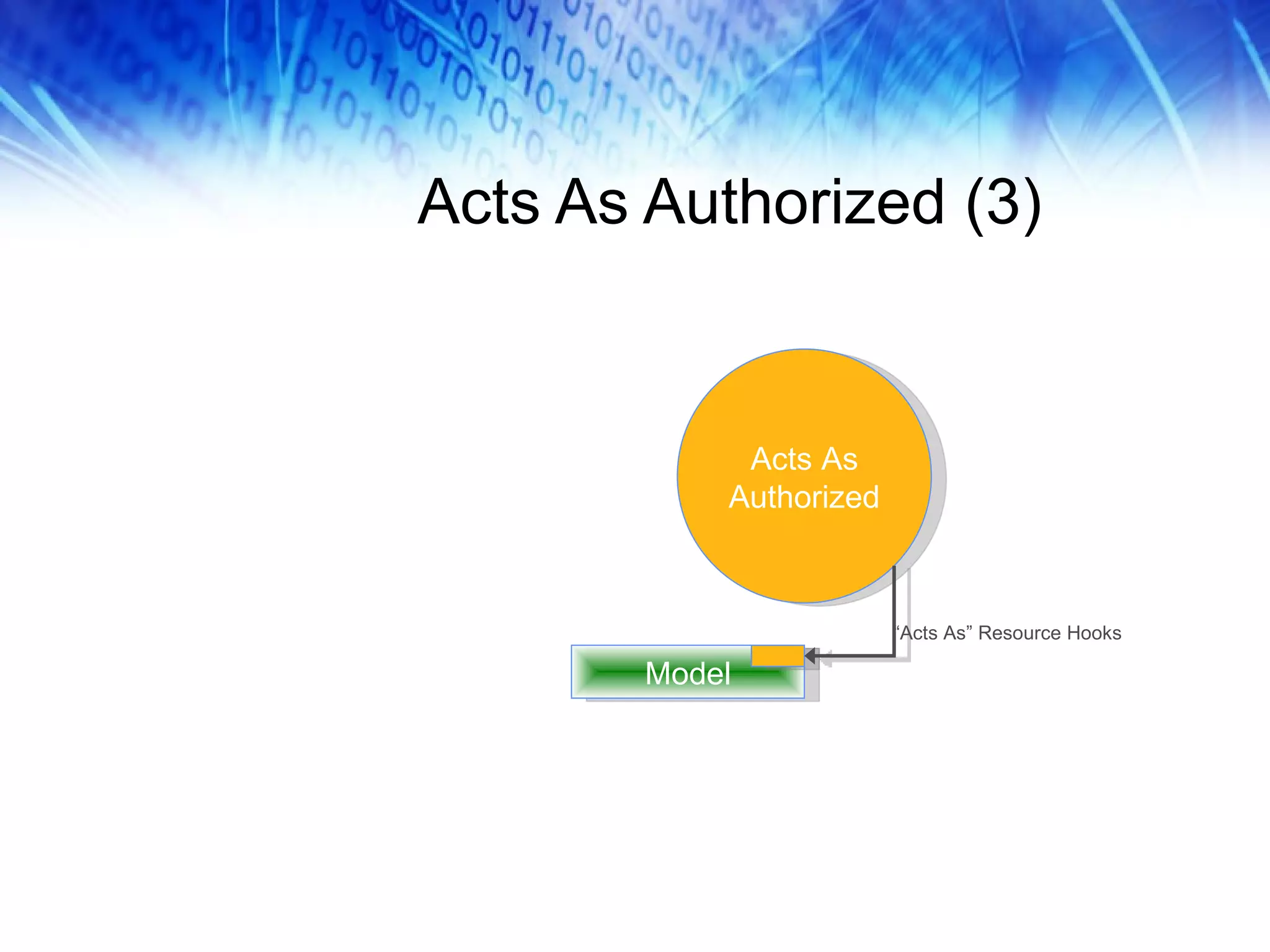
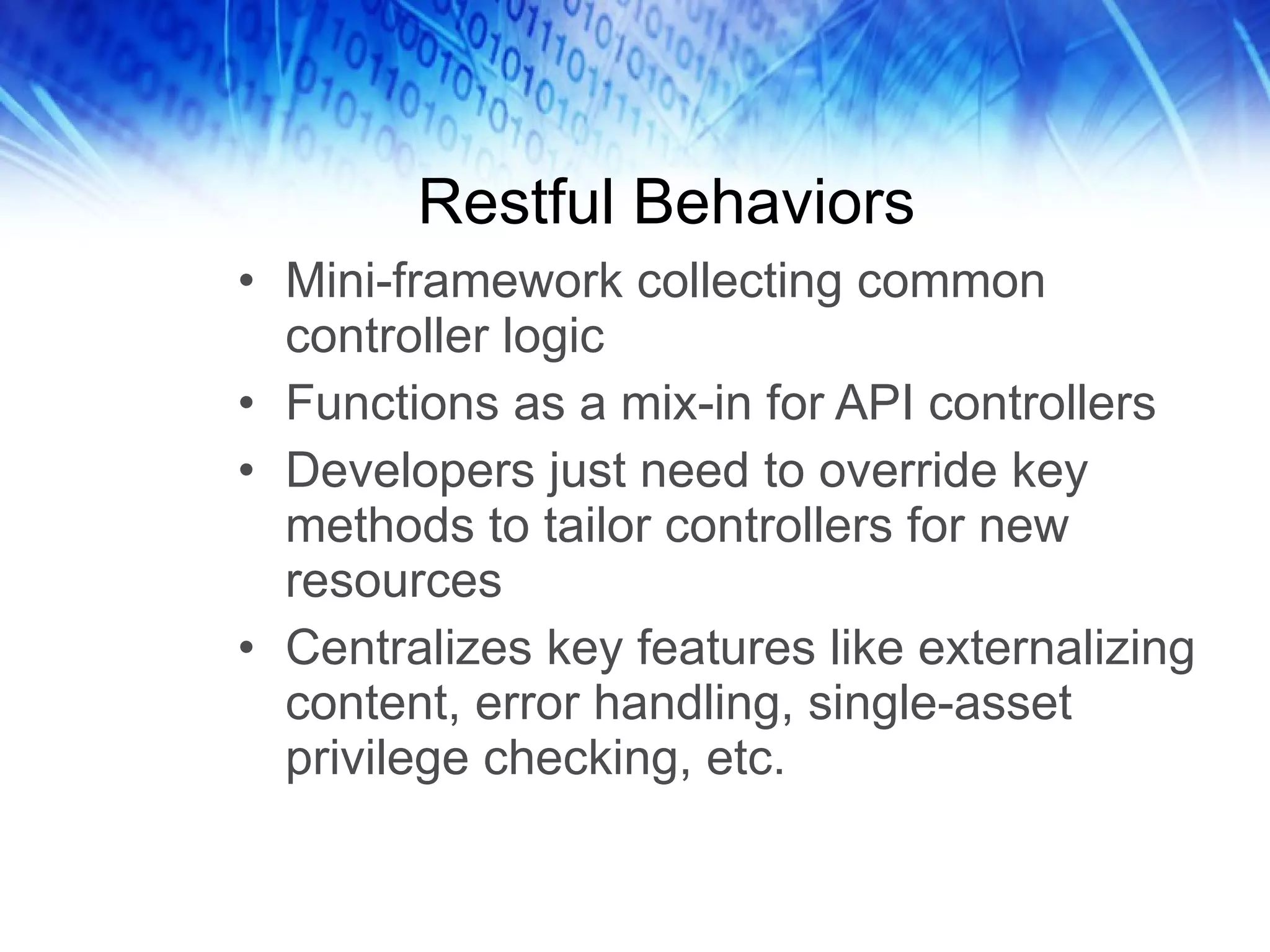
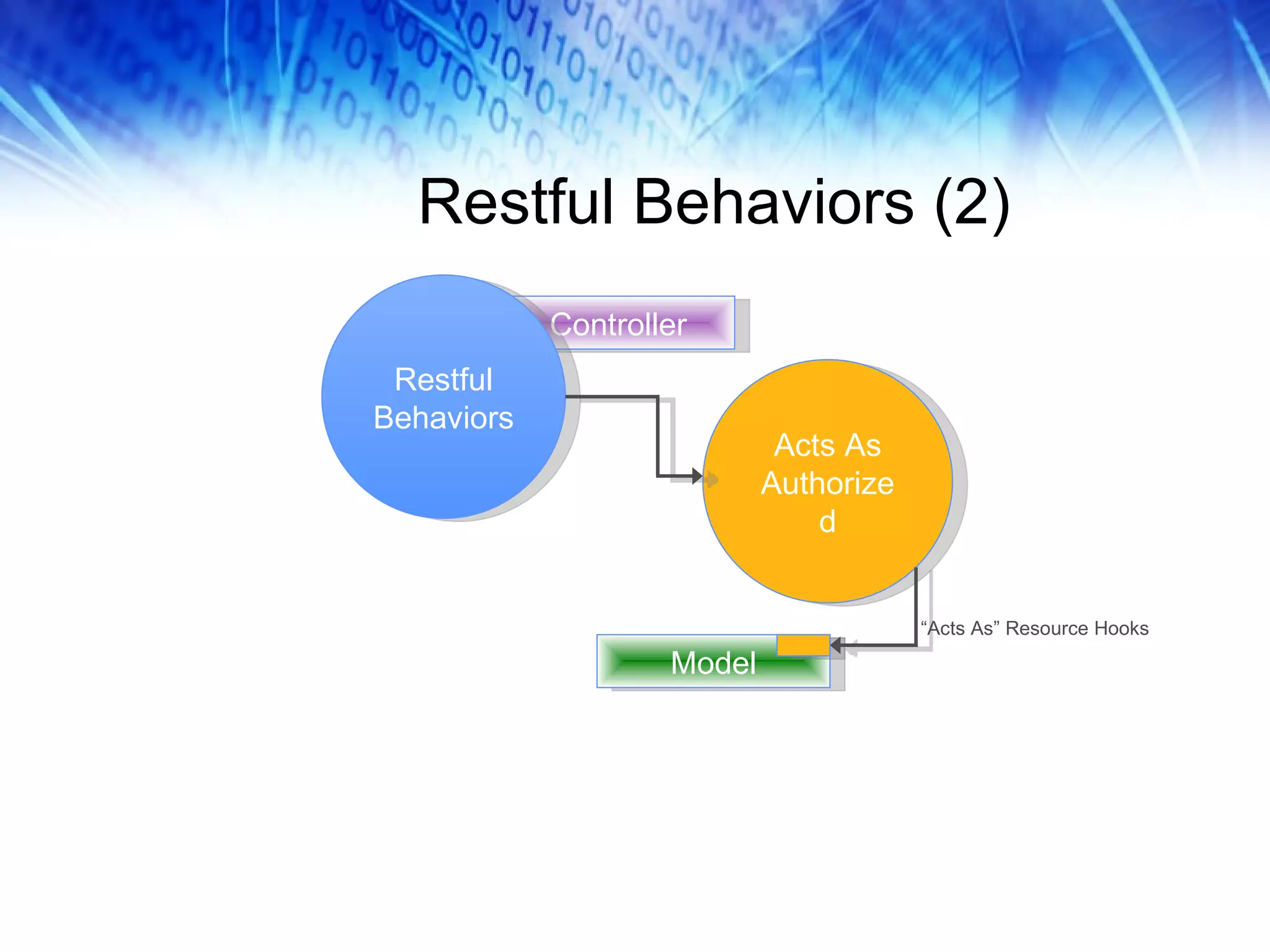
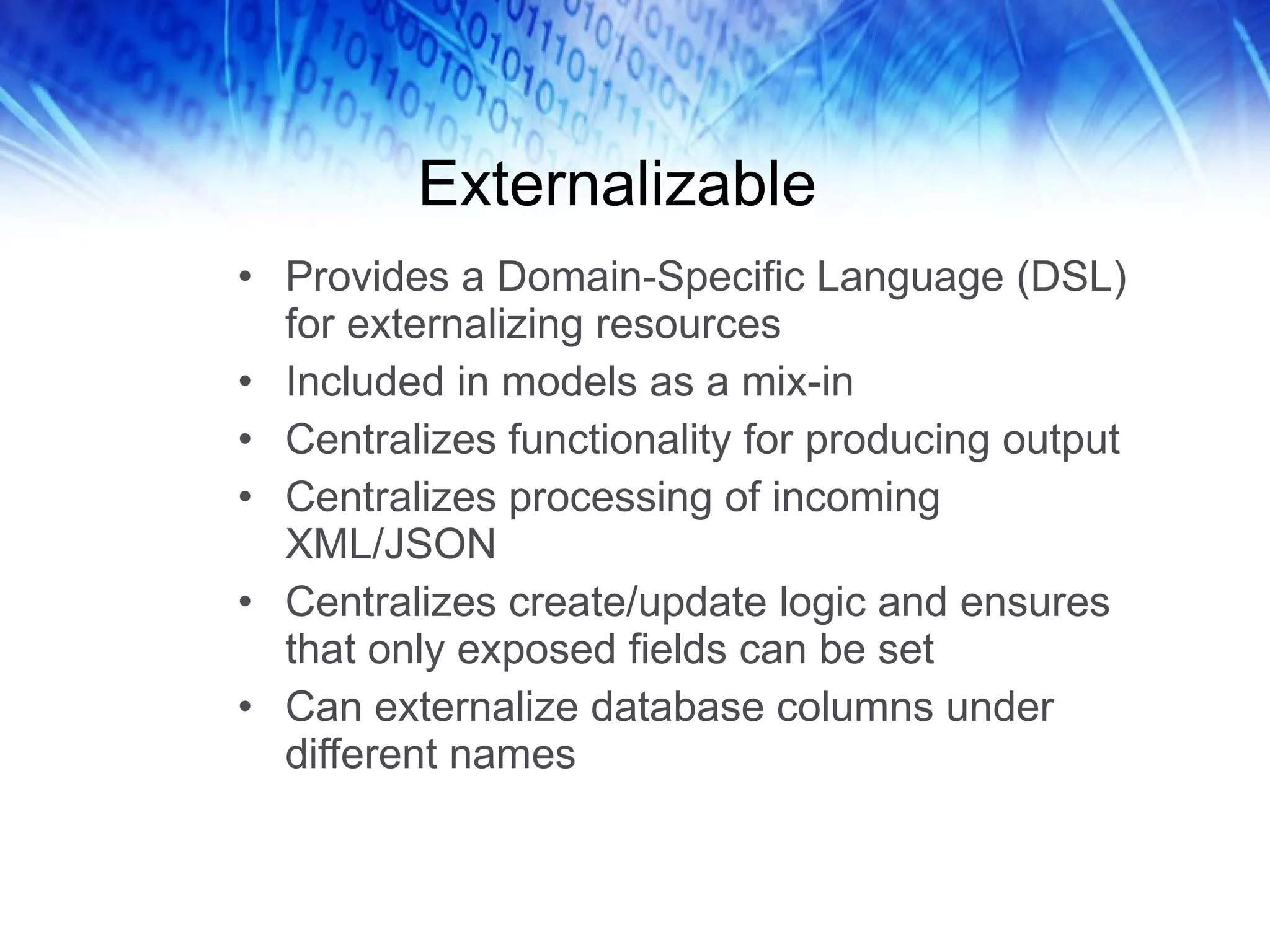
![Externalizable (2) include Externalizable externalize_model_as “video” externalize_attribute :asset_id, :label => "id", :methods => [:index, :show] externalize_attribute :headline, :label => "title” externalize_attribute :abstract, :label => "summary” externalize_attribute :keywords externalize_attribute :created_at, :methods => [:index, :show] externalize_attribute :updated_at, :methods => [:index, :show]](https://image.slidesharecdn.com/creatingrestfulapi-091219183844-phpapp01/75/Creating-a-World-Class-RESTful-Web-Services-API-32-2048.jpg)
